Sony Bravia 5 is a continuation of the iconic X90L model, and it's evident that the manufacturer aimed to take a step forward. A greater number of backlighting zones have been implemented, which makes the contrast seem better in many scenes, and the blacks appear deeper than its predecessor. The 120 Hz panel and MotionFlow system allow the smoothness of the image to be tailored to personal preferences – from a slight cinematic texture to crystal-smooth motion in sports and games. This is equipment that does not shy away from any content, as regardless of whether we are watching a match, an action film, or a concert, the image maintains clarity and character. However, the true strength of the Bravia 5 lies in the XR processor. It is this that makes older materials look better than they should – upscaling works like magic, smoothing out noise, improving gradation, and providing consistency even with lower-quality content. Thanks to this, in everyday use, the Bravia 5 can surprise, as instead of struggling with signal imperfections, it draws out the maximum. Additionally, there is excellent colour reproduction after calibration and dynamic tone mapping along with Dolby Vision mode, which allows one to enjoy details even in difficult, contrasted scenes. However, it cannot be hidden that in several moments, the Bravia 5 has disappointed us quite significantly. Despite the greater number of zones, brightness and contrast are not always better than in the X90L – sometimes they even perform worse. This raises a sense of wasted potential, as we were counting on a greater qualitative leap. After all, we are talking about a true MINI-LED television here. Nevertheless, the Bravia 5 remains an excellent television for those who want to enjoy primarily image quality. If you are looking for a model that can impress with motion smoothness, extracts details from difficult scenes, and works wonders with older materials, the Bravia 5 will surely meet those expectations. It's a television that sometimes struggles to keep up with the competition in certain aspects, but it still holds its own with what Sony does best – cinematic imagery.
- Matching (Score)
- Our verdict
- TV appearance
- Where to buy
- Contrast and black detail
- HDR effect quality
- Factory color reproduction
- Color reproduction after calibration
- Smoothness of tonal transitions
- Image scaling and smoothness of tonal transitions
- Blur and motion smoothness
- Console compatibility and gaming features
- Input lag
- Compatibility with PC
- Viewing angles
- Daytime performance
- Panel details
- TV features
- Apps
- Playing files from USB
- Sound
Sony BRAVIA 5 (XR5) vs Samsung QN80F 100"
Direct comparison
Bravia 5 / XR5
Available screen sizes: 100”

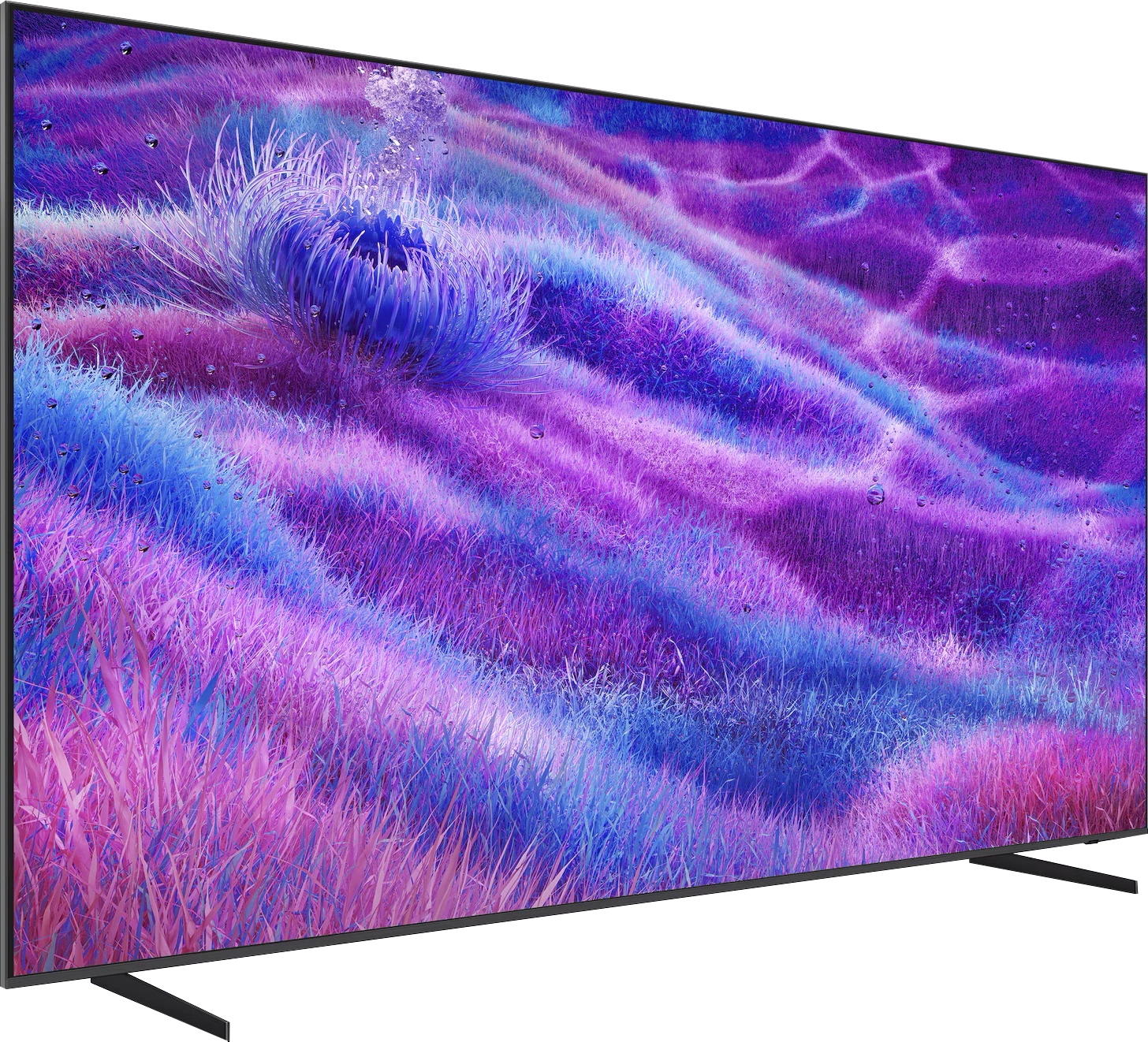
Panel type: LCD VA
Resolution: 3840x2160
System: Google TV
Model year: 2025
Complete the survey to find out the result

Panel type: LCD VA
Resolution: 3840x2160
System: Tizen
Model year: 2025
Complete the survey to find out the result

Overall rating
7.6
7.4
Movies and series in UHD quality
7.0
7.2
Classic TV, YouTube
7.4
7.0
Sports broadcasts (TV and apps)
7.3
6.7
Gaming on console
8.7
8.6
TV as a computer monitor
8.0
8.6
Watching in bright light
6.9
7.0
Utility functions
7.6
7.7
Apps
9.6
8.7
Sound quality
7.0
6.7
Complete the survey to find out what fits your preferences
Advantages
Exemplary upscaling and digital image processing – Sony’s proprietary XR processor
Very good image quality after calibration
Solid contrast for a Mini-LED screen
Excellent support for HDR content thanks to Dolby Vision and dynamic tone mapping
High motion fluidity at 120Hz
Remarkable input lag (7 ms at 120 Hz)
Very good compatibility with PC – superb font readability, support for G-Sync and FreeSync Premium Pro.
Google TV in its best form, fast and without annoying glitches
2 remotes included
Pleasant, loud sound at 40 W from a 2.2 system.
HDR brightness up to 1300 nits
Good blacks - MiniLED with VA matrix
Fast 144 Hz panel and 4 HDMI 2.1 ports
Many features for gamers: VRR, ALLM and excellent game bar
Low input lag (<10 ms)
Fast Tizen operating system with SmartThings support
Support for Dolby Atmos
Disadvantages
The algorithms require refinement – despite the increased number of dimming zones, contrast and brightness in challenging scenes sometimes perform worse than on the X90L
Screen mirroring practically didn't work with Windows and Android
Only two HDMI 2.1 ports – in a television of this class, that's decidedly too few, especially if someone plans to connect a console, soundbar, and additional devices
Poor viewing angles
Limited number of dimming zones for a 100" screen
Absence of Dolby Vision and HGIG
Our verdict
QN80F is the first "eighty" from Samsung available in a 100-inch version (previously "only" 98 inches 😉) and is also the model that entered the series with Mini LED backlighting. It must be admitted that it performs really well at this scale. Although the number of dimming zones is not impressive for such a massive screen, the contrast and black levels are solid, and combined with high brightness, the television can deliver excellent experiences in HDR movies and series. The 144 Hz panel ensures smooth motion, and a full set of gaming features – VRR, ALLM, and Game Motion Plus – makes it difficult to label the QN80F as anything other than a screen designed for both consoles and PC. Additionally, there is the fast and stable Tizen, which provides access to all key applications and can serve as a smart home hub through the proprietary SmartThings app. Naturally, there are some shortcomings – there is no Dolby Vision, no USB recording, and the viewing angles at 100 inches can be quite problematic. Mini LED still has its limitations, so those expecting absolutely perfect blacks need to keep that in mind. On the other hand, given the current prices of OLEDs in such sizes, it's hard to speak of real competition.
QN80F is a versatile television, well-crafted and providing a lot of satisfaction on a daily basis. Looking at the history of this series, one can be sure that as soon as it appears at reasonable promotions, it will be one of the most interesting offerings in its class. And if Samsung addresses the minor shortcomings with updates, this 100-inch beast may turn out to be really hard to beat, just like its smaller versions.
TV appearance




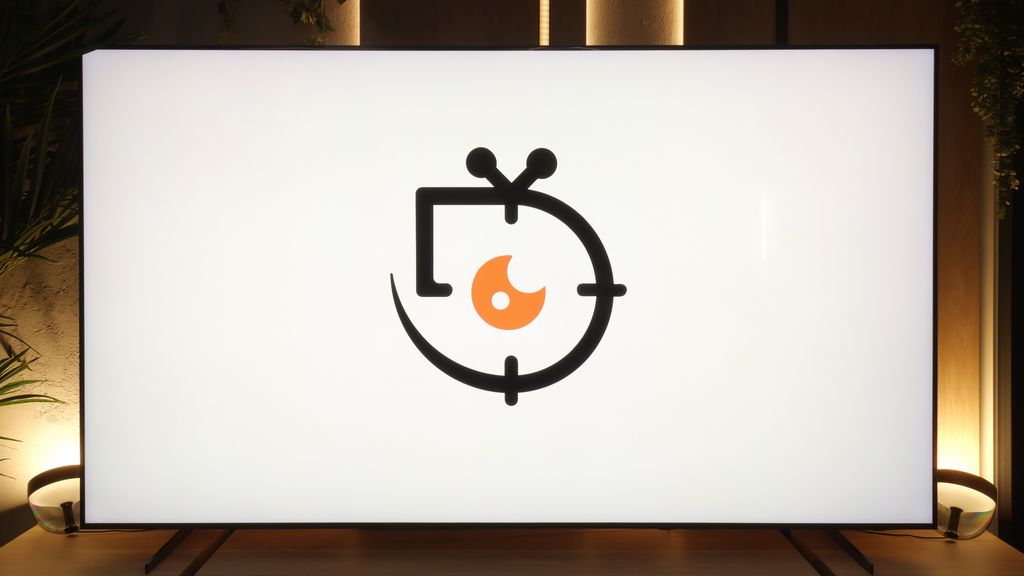

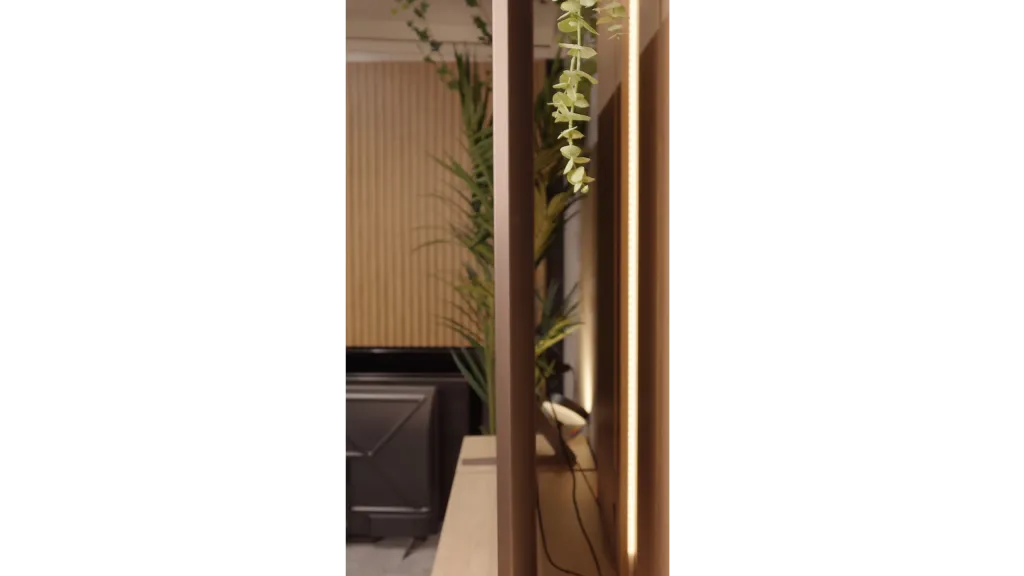
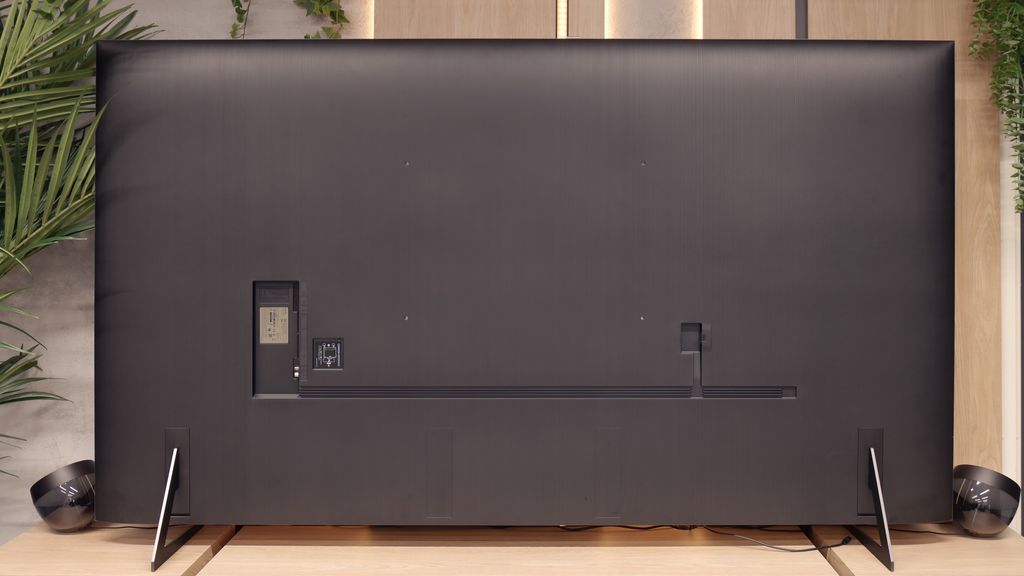
Contrast and black detail
7.5/10
7.1/10
Local dimming function: Yes, number of zones: 190 (10 x 19)
Local dimming function: Yes, number of zones: 120 (10 x 12)
Contrast:

Result
104,650:1

Result
23,850:1

Result
21,300:1

Result
9,350:1

Result
6,450:1

Result
94,400:1

Result
12,650:1

Result
31,750:1

Result
7,350:1

Result
3,000:1
Halo effect and black detail visibility:

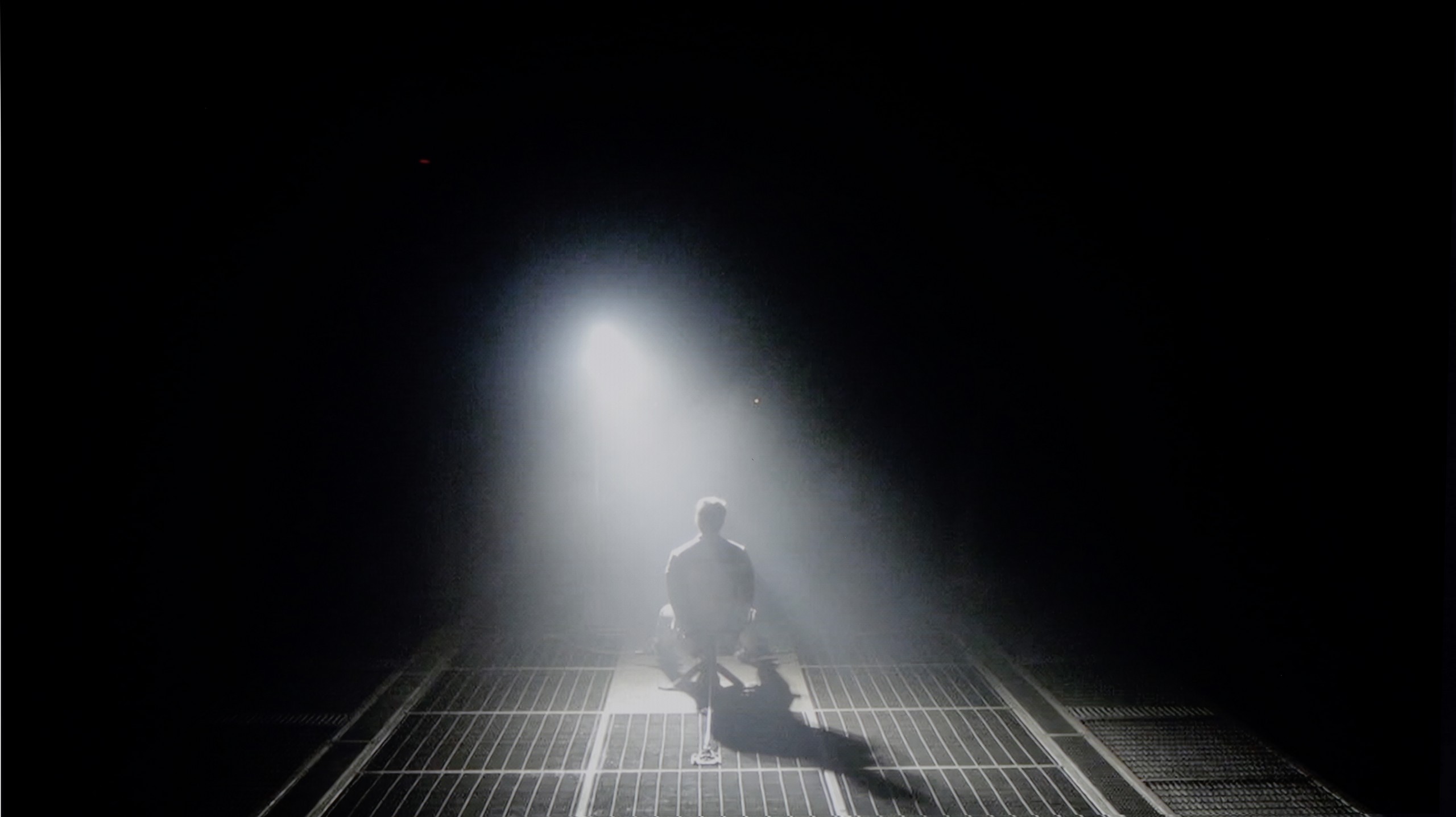
Bravia 5 is the entry-level television from the Mini-LED series in Sony's portfolio for 2025, so naturally we start with the most important question – how does it handle black levels and contrast? After all, the term “Mini-LED” almost sounds like a magic spell these days. In theory, this means thousands of tiny LEDs arranged in zones that are meant to work in harmony, dimming and brightening the image so that the viewer sees more depth than in a classic LCD. In practice, we've counted about 200 local dimming zones in the 65-inch Bravia 5. Is that a lot? Certainly more than its predecessor, the already legendary X90L model, but when looking at Chinese manufacturers who manage to pack in hundreds, sometimes even thousands of zones – it seems rather modest.
One might expect that the combination of a greater number of zones with the refined dimming algorithms that Sony has accustomed us to over the years would translate to a significant quality leap over the X90L. Meanwhile – and here comes a slight disappointment – tests showed that the results are surprisingly similar to last year's model. Don't take this the wrong way: the contrast for an LCD television with local dimming is truly solid. In most scenes, bright elements are separated from dark ones with surgical precision, and the effect can be stunning. But when more demanding shots appear on the screen – those that relentlessly test the capabilities of the backlighting – it's clear that the equipment has its limitations.
Therefore, one could say that in terms of black levels and contrast, the Bravia 5 doesn't so much disappoint as rather fails to meet the expectations raised by the initial announcements. We were hoping for at least a slightly better result than its predecessor, and we got “only” good contrast. And it is this “only” that is the key word here – because good contrast in Sony's rendition still signifies a level that most competitors could be proud of.
The QN80F is part of the NeoQLED family, which are Samsung televisions based on mini-LED technology. In practice, this means local dimming zones that are intended to improve contrast and light separation. In the case of the 100-inch version, we are dealing with a VA panel combined with about 120 zones – a rather modest result for such a large surface, although it must be admitted that it still translates into noticeably better results than in smaller screen sizes. In the best scenes for it in films, the contrast can be truly strong – five-digit values are not an exaggeration, and the lights separate from the black in a way that is impressive at first glance. However, physics cannot be deceived. Since such a huge screen must "work" with a relatively small number of zones, there are moments when the television struggles with image control. For example, when a multitude of bright, small elements appears against a black background in the final scene of a film, there are visible halos and glowing around them. This shows that even with a finely-tuned algorithm, mini-LED still has its limitations. Generally, however, the contrast can be considered very good, and in everyday viewing, most users will be fully satisfied. It is just important to remember that this model does not provide absolute black, as known from OLEDs, just as no LCD television does.
HDR effect quality
5.4/10
6.5/10
Luminance measurements in HDR:

Result
637 nit

Result
320 nit

Result
550 nit

Result
251 nit

Result
731 nit

Result
1150 nit

Result
721 nit

Result
875 nit

Result
377 nit

Result
849 nit
Scene from the movie “Pan” (about 2800 nits)


Scene from the movie “Billy Lynn” (about 1100 nits)

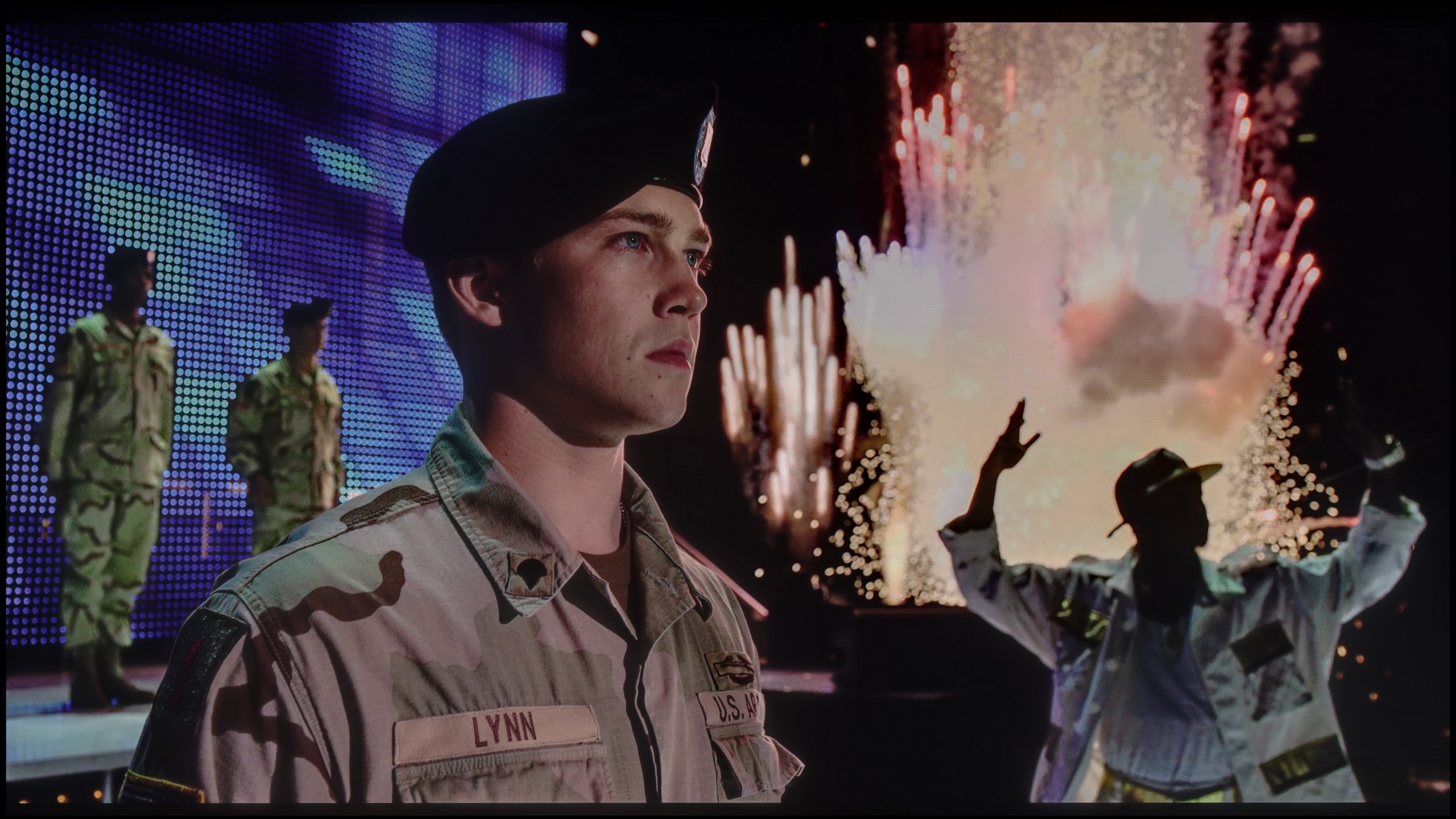
Static HDR10


Dynamic: Dolby Vision
Dynamic: HDR10+


HDR luminance chart:
Samsung QN80F 100"
HDR luminance
Sony BRAVIA 5 (XR5)
HDR luminance
Looking at similar results in terms of blackness and contrast, we expected equally stable performance as last year's model when it came to HDR content. Unfortunately – and this needs to be said outright – there has been a regression here that is hard to overlook. The paradox is that the peak brightness of the Bravia 5 is impressive: in our synthetic tests, the television achieved around 1000 nits in HDR. Sounds great, right? The problem is that this power does not always translate effectively to all film scenes. When small, point-like elements appear on the screen, something that had usually been polished with surgical precision in Sony's case is this time noticeably lacking. The algorithms attempt to maintain deep black around small objects, but the side effect is that details can be dimmed to such an extent that they become barely visible. Just consider the example of the film Sicario 2 – in some scenes there, small light sources practically disappeared, as if someone had covered them with dark film.
Of course, not everything looks so dramatic. In simpler, brighter scenes, where the image is filled with more light, the Bravia 5 shows that it can shine: literally and figuratively. Then the television achieves values in the range of 600–800 nits, which we saw both in synthetic tests and during film screenings. The impression is really positive; the brightness adds dynamism, and the colours appear vibrant and fresh. However, there remains a certain dissonance. We feel a slight confusion because evidently something has gone in a direction it shouldn’t have. Technological progress – more zones, greater backlighting power – has not been supported by the well-crafted image management that we usually associate with Sony. Fortunately, there are elements that have not been worsened and are, in fact, at a very high level. We are talking about colour reproduction. Thanks to the application of the PFS filter, the colour palette coverage is excellent – around 97% DCI-P3 and 75% BT.2020. These are values that allow for truly broad colour reproduction, giving films a sense of naturalness and cinematic quality.
When it comes to HDR in Filmmaker mode, the QN80F can make a great first impression. Our laboratory tests have shown that under the best conditions, the television is capable of achieving brightness exceeding 1200–1300 nits. These are truly excellent results, making HDR effects in many films look incredible. The television is simply bright enough not to need to artificially adapt the image – the bright parts of scenes have the right 'power' and actually look like a light source. Of course, the laboratory is one thing, and everyday viewing is another. In practice, in film scenes, brightness generally oscillates in the range of 700–1100 nits. These are still great values that, in most cases, provide a strong sense of realism and make the lights on the screen truly capable of blinding. The problem arises in exceptionally challenging sequences, where, like almost every mini-LED, it reveals its limitations. A good example is Sicario 2: the scenes with the helicopter in the night sky look much weaker, and the lights lose intensity, dropping to around 370 nits, making it hard to speak of serious admiration. To this, we must add the issue of colours. Although we are dealing with a QLED, the coverage of the DCI-P3 colour palette is around 90%. This is a rather average result for a quantum dot television. In practice, this means that some colours may appear less saturated than we would expect, especially in demanding HDR productions.
Factory color reproduction
5.5/10
6/10


Factory Mode
After calibration


Factory Mode
After calibration
Sony Bravia 5 was of course tested in the best possible mode, which is the Cinema mode. Right out of the box, it provides the most natural colours, definitely better than anything offered by the "eco" or "dynamic" modes, which are more suited for a showroom display than for a living room. However, the Cinema mode alone does not mean we can always expect cinematic picture quality. With SDR content, we had virtually no major complaints – the slightly warmed white balance gave the scenes a somewhat golden tone, but it was nothing that was visually jarring. However, the problem arose with HDR material. Here, the colour reproduction simply looked poor. The white balance was heavily skewed – with an excess of blue and a clear lack of red. At times, it resembled the store's "super vibrant image" mode, where everything is overexposed and artificially boosted.
This situation also made brightness management seem overly aggressive. The EOTF graph clearly showed that the television had problems with overexposing many scenes right out of the box. And while we know what Sony televisions are usually capable of, it was difficult to remain indifferent here – thus we quickly decided to go for calibration.
The Samsung QN80F performs best in Filmmaker mode, which is designed to replicate the creators' intentions as accurately as possible. And indeed – this is the mode in which the television showcases its potential. But let’s not kid ourselves, it is far from perfect. In SDR content, the issue of white balance came to the forefront. Slightly lacking greens and a noticeable excess of reds caused the screen to take on a pinkish hue. You don't even need meters to notice this – in everyday viewing, the subtly shifted colour palette could be quite noticeable, and in colour checker tests, the colours would literally "pop" out of their reference fields. With HDR content, the situation looked a bit better, as the white balance was closer to ideal, but another problem arose – brightness management. The EOTF curve often caused the image to become too bright, which spoiled the sense of contrast, and in dynamic scenes, it led to a slight "flicker" in perception. We had already mentioned this when discussing black levels and HDR. The good news, however, is that Samsung provides a lot of tools for improvement. The QN80F allows for truly detailed calibration, including a 20-point white balance. And since the manufacturer has left us so many options, we decided to check how the television would perform after a thorough adjustment.
Color reproduction after calibration
8.9/10
8.3/10

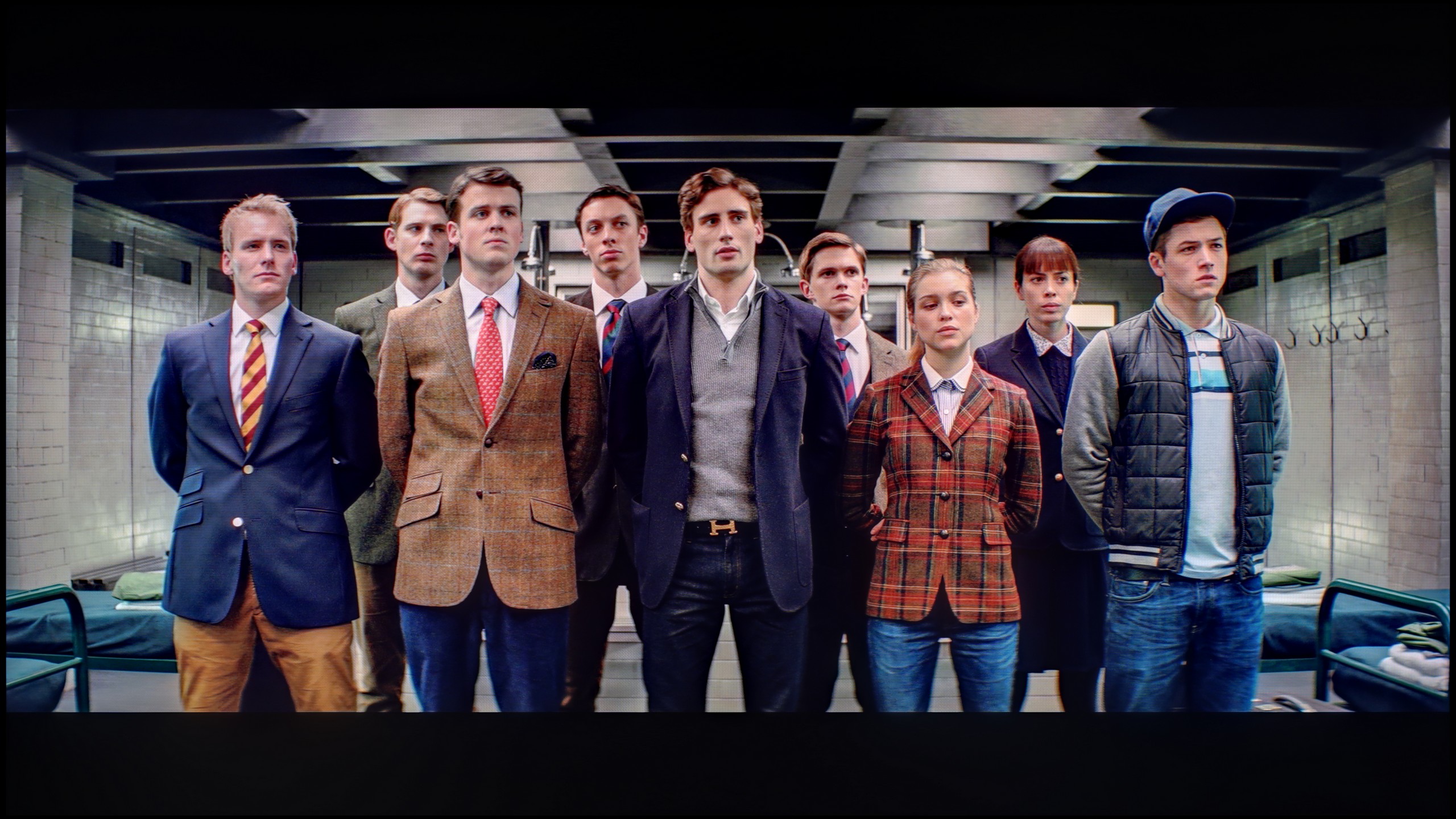

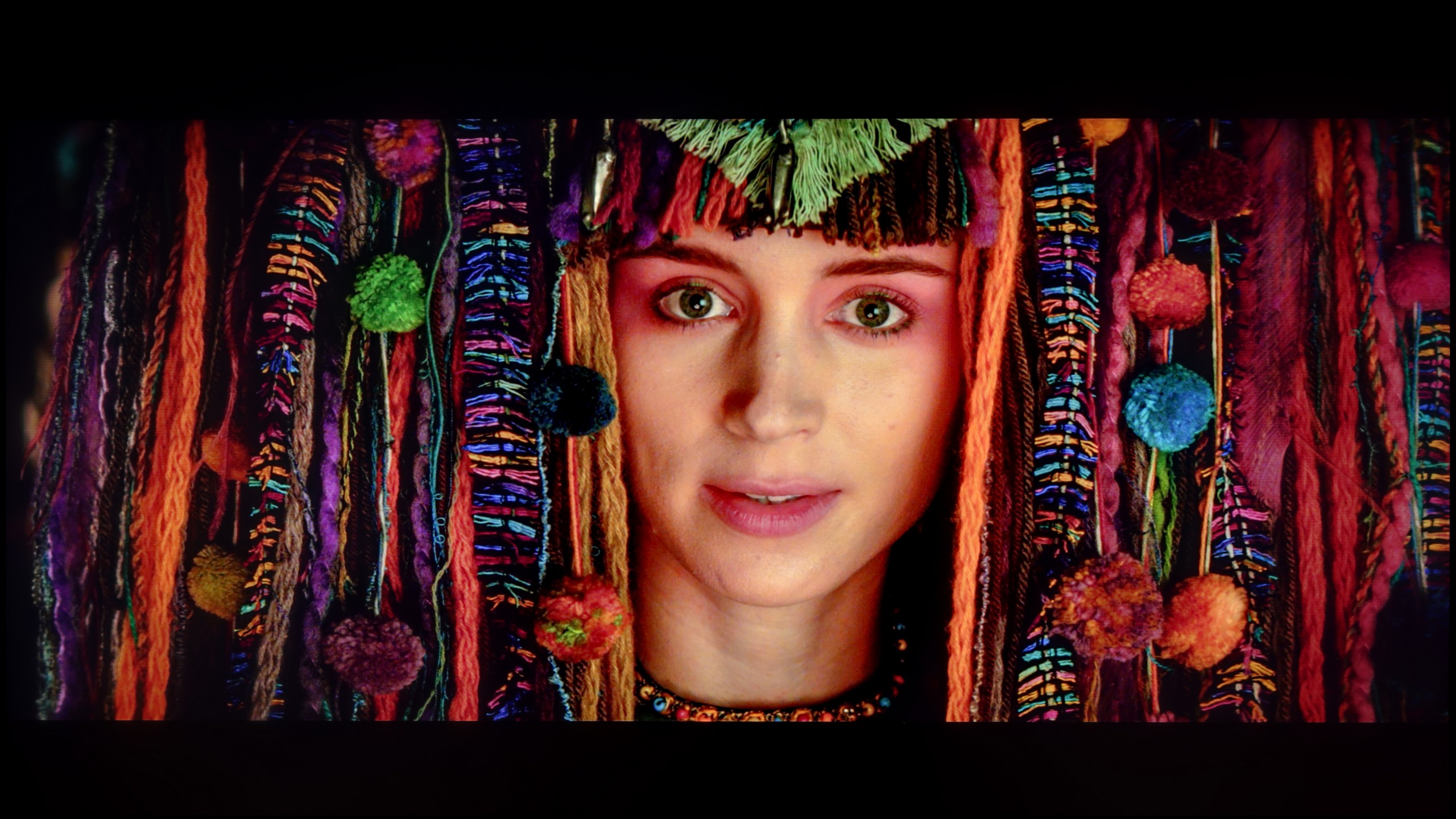
After calibration, the situation changed dramatically. We managed to adjust the white balance so that entire scenes began to look more natural, and the image gained cohesion and elegance. In HDR, we finally got rid of that unwanted clipping effect that had previously marred some shots. Suddenly, it turned out that the Bravia 5 can extract significantly more from films than the “out of the box” impression suggested. Indeed, if we look at the graphs and compare them with the patterns, we can see that the beginning of the EOTF curve slightly deviates from the reference line. However, this is not so much a calibration error as it is a natural limitation of Mini-LED technology, which cannot be bypassed. Sony, instead of clinging to perfect black, prefers to prioritise the visibility of details – and in practice, it's hard to disagree with that. We would rather see the texture of the material on the screen than a pitch-black blob where all nuances are lost.
The calibration itself was truly beneficial. After about an hour spent on the settings, we felt that the image resembled that from the best cinema halls – of course on a home scale, but with the same sense of quality and refinement. And in such moments, we remember why we like Sony televisions: because when we fine-tune them, they can reward us with an image that captivates for long hours.
After calibrating the QN80F, it immediately showed that it was capable of much more. The previous pinkish tint disappeared, and the white balance finally looks like it should – natural and without excessive deviations. The colours gained depth, and the image became more saturated and cohesive, making watching films simply more enjoyable. It's a bit like removing a light haze from the screen – suddenly everything appears sharper and clearer. The management of brightness has also improved. The television no longer gets easily lost in dynamic shifts, and the EOTF graph shows that the curve tracking is significantly more stable. Of course, there are no miracles – the limited number of zones still means that small bright elements can be slightly washed out, but that's a result of the design itself, not the settings. After this correction, the QN80F feels like a more mature piece of equipment, and watching films finally provides the satisfaction expected from a television even in a higher class.
Smoothness of tonal transitions
8.8/10
9/10





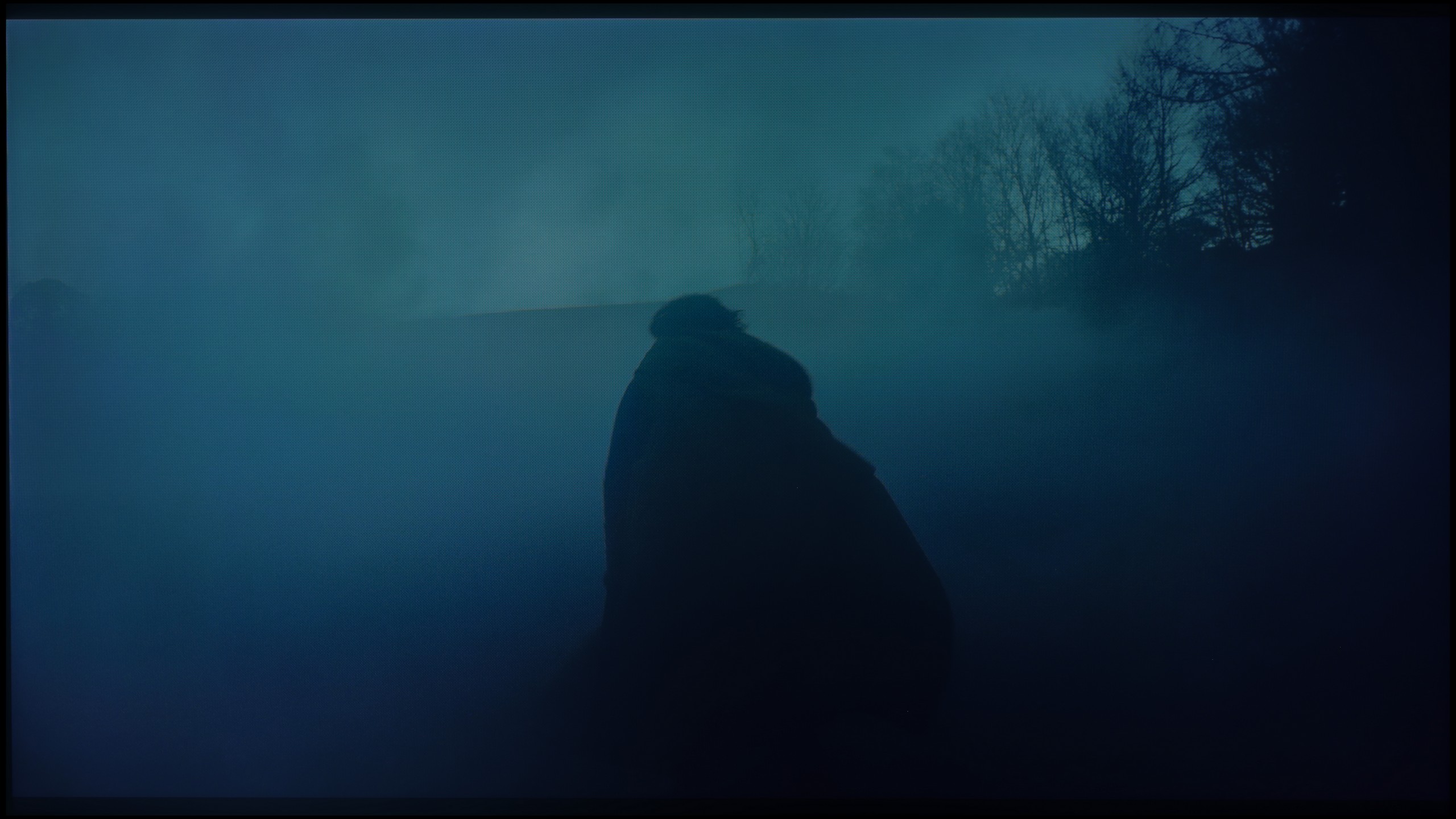

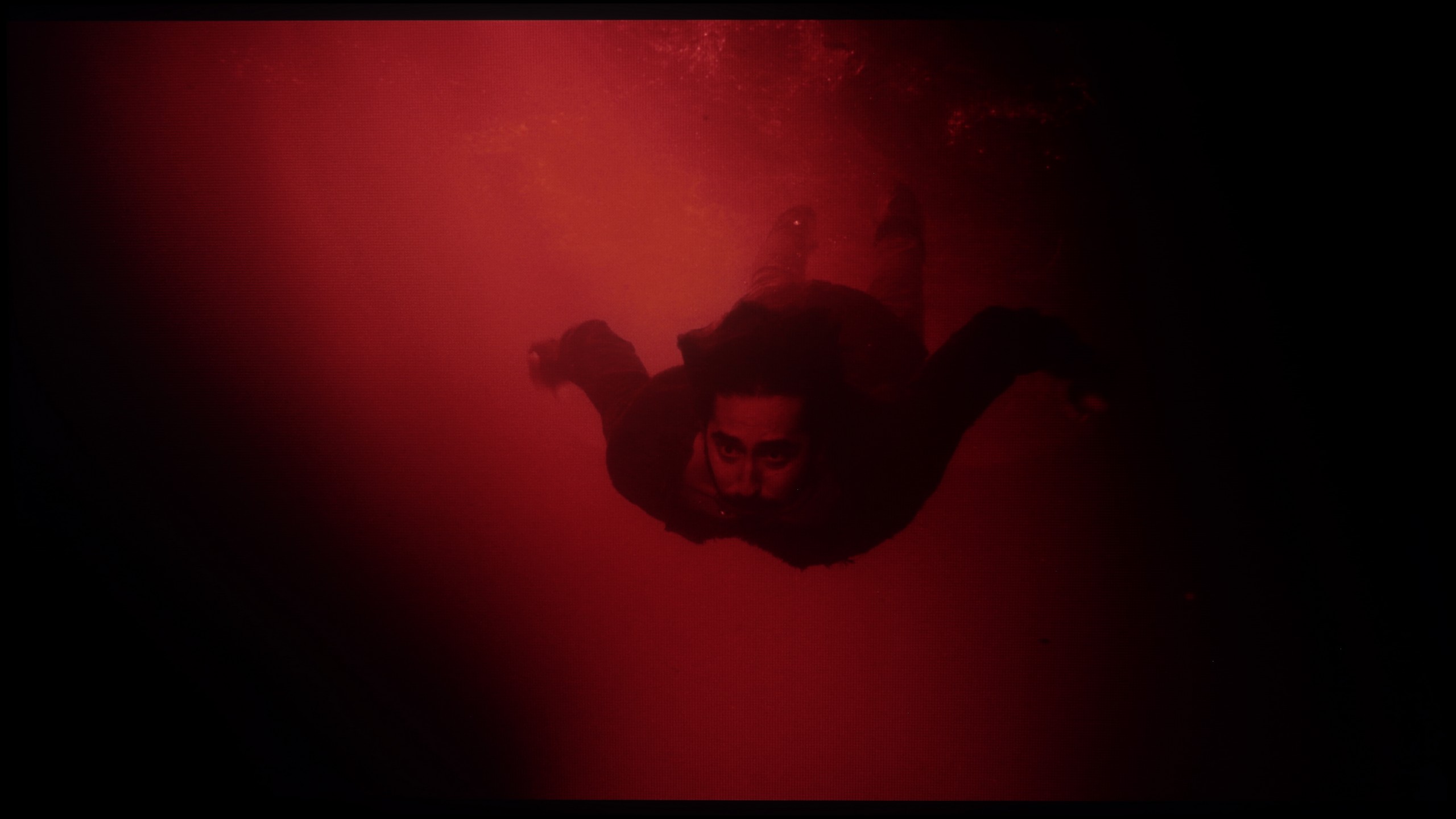




tonal transitions are nothing more than the way in which a television handles the blending of colours and shades – from light to dark, from saturated to pastel. If the device struggles with this, characteristic "steps" can be seen instead of smooth transitions, and the image loses its naturalness. It is during these moments that instead of getting absorbed in the film, we start glancing at the screen thinking, "hey, something's not right here." Fortunately, in the Sony Bravia 5, such situations are practically nonexistent. This is a huge advantage, as nothing distracts our attention from the plot or sporting emotions. The television performs best in bright scenes, where colour transitions are smooth, and the blending of colours is almost invisible. The effect is so good that sometimes one might feel as if the image has been painted in one brushstroke. Of course, there were a few minor hiccups. In darker scenes, certain imperfections can be noticed – slight stepping or minimal gradation issues. For this, the Bravia 5 received a few negative points from us. Nevertheless, in the vast majority of situations, the television performs excellently and comes through this test with flying colours.
In terms of the fluidity of tonal transitions, that is, blending colours into one another, the QN80F performs really well. The colour gradients are smooth, the image does not break up into artificial bands, and the sky or extensive surfaces in shadow look as they should – without odd blotches or disturbances. It performs particularly well in scenes with dark tones, where many televisions can struggle and generate unpleasant artefacts. Here, everything remains consistent and clear. Yes, in the brightest sections, one can sometimes notice slight banding, but that is a detail that only very discerning viewers examining the image frame by frame will pick up on. In everyday use, there is practically nothing to speak of. The QN80F gives a sense of assurance that tonal transitions will not be a distracting element.
Image scaling and smoothness of tonal transitions
8.5/10
7.5/10
Smooth transition function

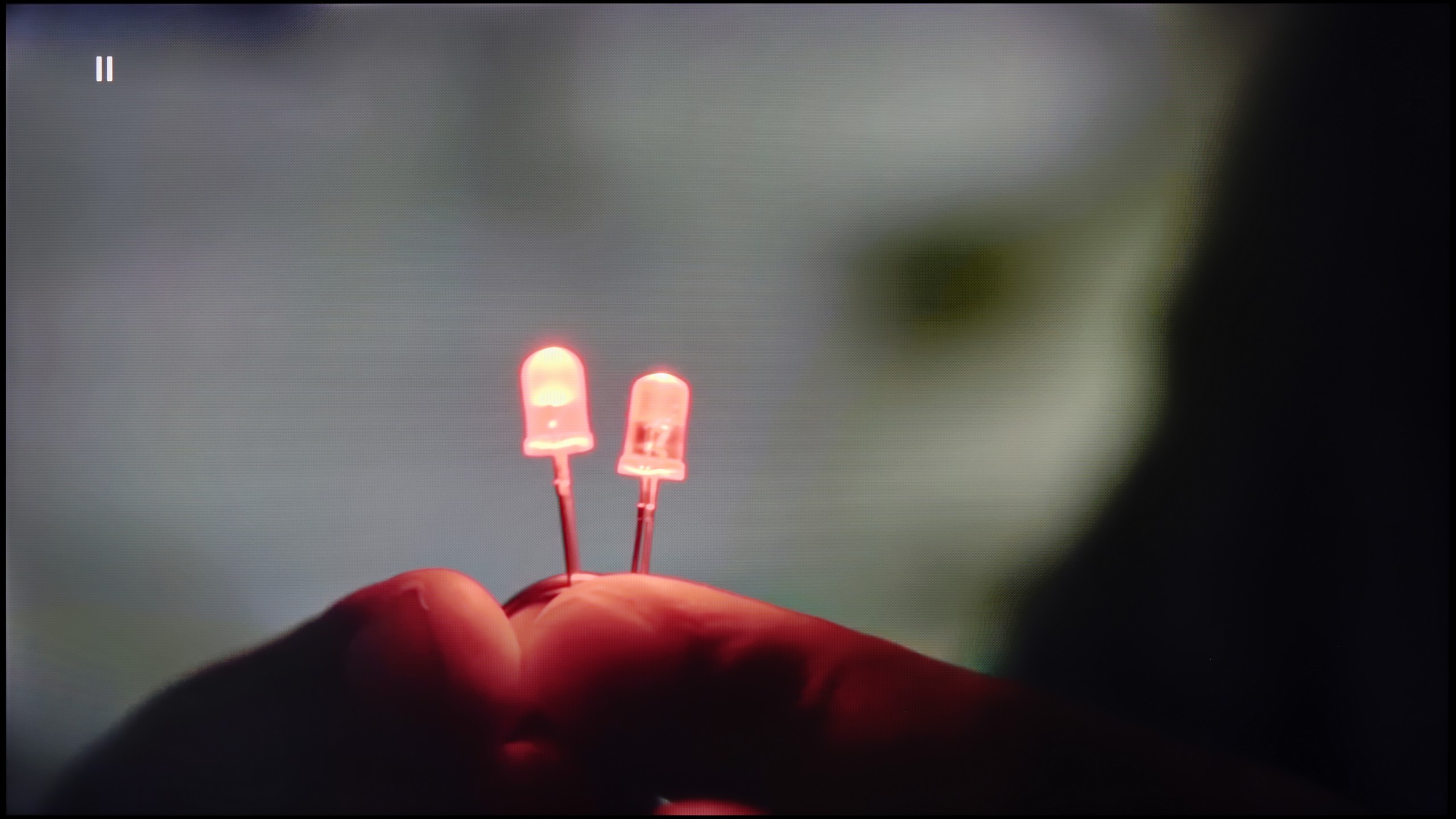
Image without overscan on the SD signal

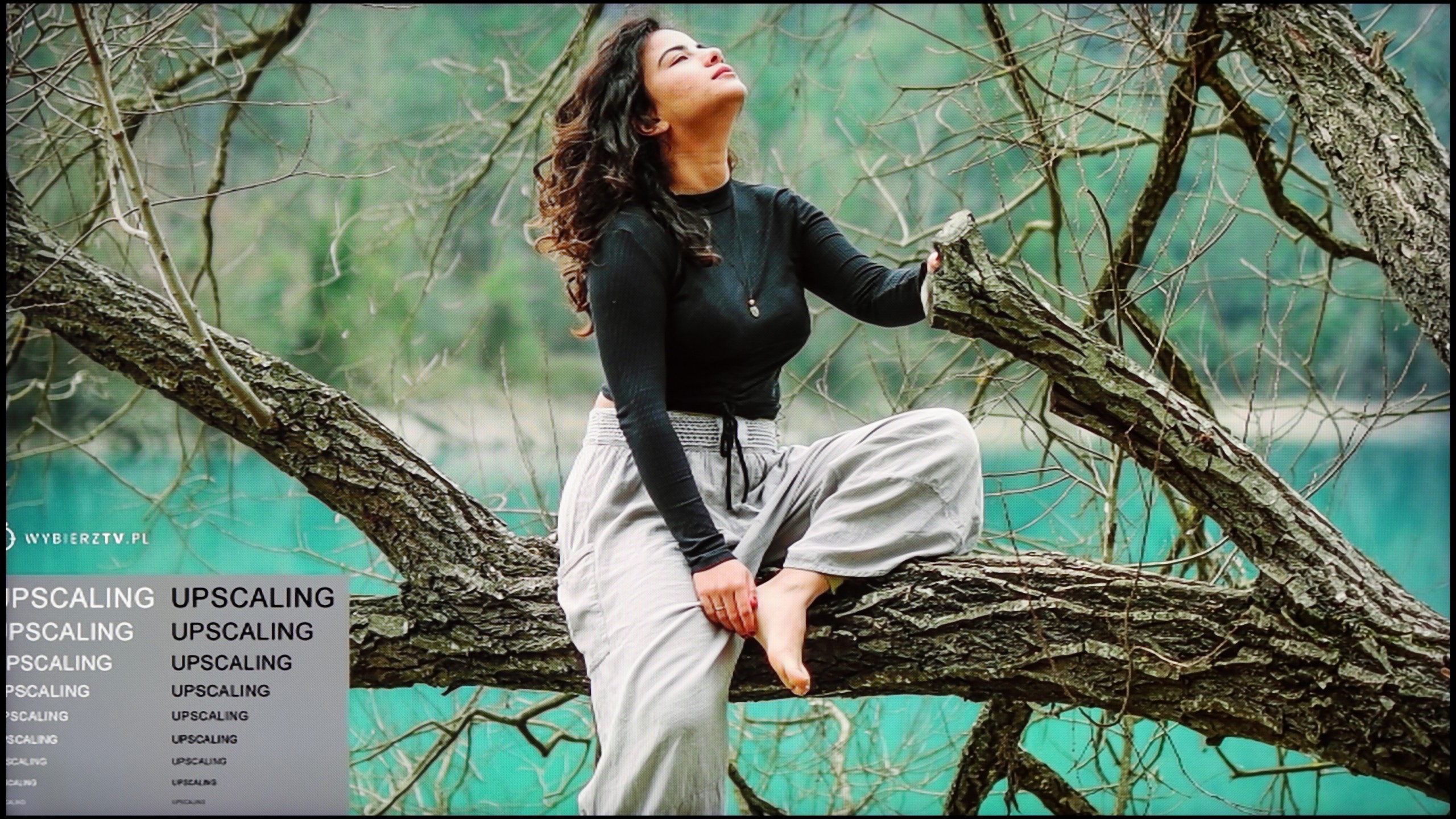
Bravia 5 carries within it the genes of Sony, which have remained untouched – and thank goodness for that, because we are talking about absolutely remarkable digital image processing. It is no coincidence that for years it has been believed that it is televisions of this brand that set the standard for how a screen should handle lower quality materials. If someone still watches classic television, old films or YouTube in lower resolutions, here they get equipment that can transform such content into an unexpectedly pleasant experience. On board, we find several tools worth activating. The first of these is "digital noise reduction". Set to a medium level, it works perfectly – smoothing tonal transitions, which usually cause the most trouble in low-quality materials, while not introducing any artificial artifacts. Importantly, it also does not remove the filmic character, meaning the natural grain that is intentionally present in many productions. Another advantage of the Bravia 5 is the upscaling capabilities of the XR processor. The image displayed after scaling is soft, yet at the same time sharp and clear. The contours of characters are clearly visible, while backgrounds retain their structure without excessive artificial sharpening. It’s hard to find a better television for watching lower quality materials – Bravia 5 only confirms why Sony is regarded as a benchmark in this field.
With lower quality materials, such as films from YouTube or older television recordings, the QN80F can display its strengths and weaknesses. If strange colour transitions or artefacts start to appear on the screen, it is worth using the noise reduction function. The best setting is at "medium" – it smooths out problematic sections while not blurring the entire image. However, one compromise must be remembered: this function always removes film grain. If someone enjoys its presence in older productions, it is better to keep the reduction turned off, as the grain simply disappears regardless of the setting.
Resolution scaling, or upscaling, is another strong point of Samsung. The QN80F may not be the best television on the market in this regard, but it performs very well in its price range, which is very important for such a large size as a 100-inch screen. Even lower quality materials can gain a second life – the image becomes sharper, more readable, and overall much more pleasant to perceive. A weak point remains overscan, which is the slight cropping of edges in very low resolutions (e.g., 576p), something that has been a longstanding issue for Samsung. Fortunately, this is practically of no consequence when watching HD and 4K content on a daily basis.
Blur and motion smoothness
7.9/10
7/10

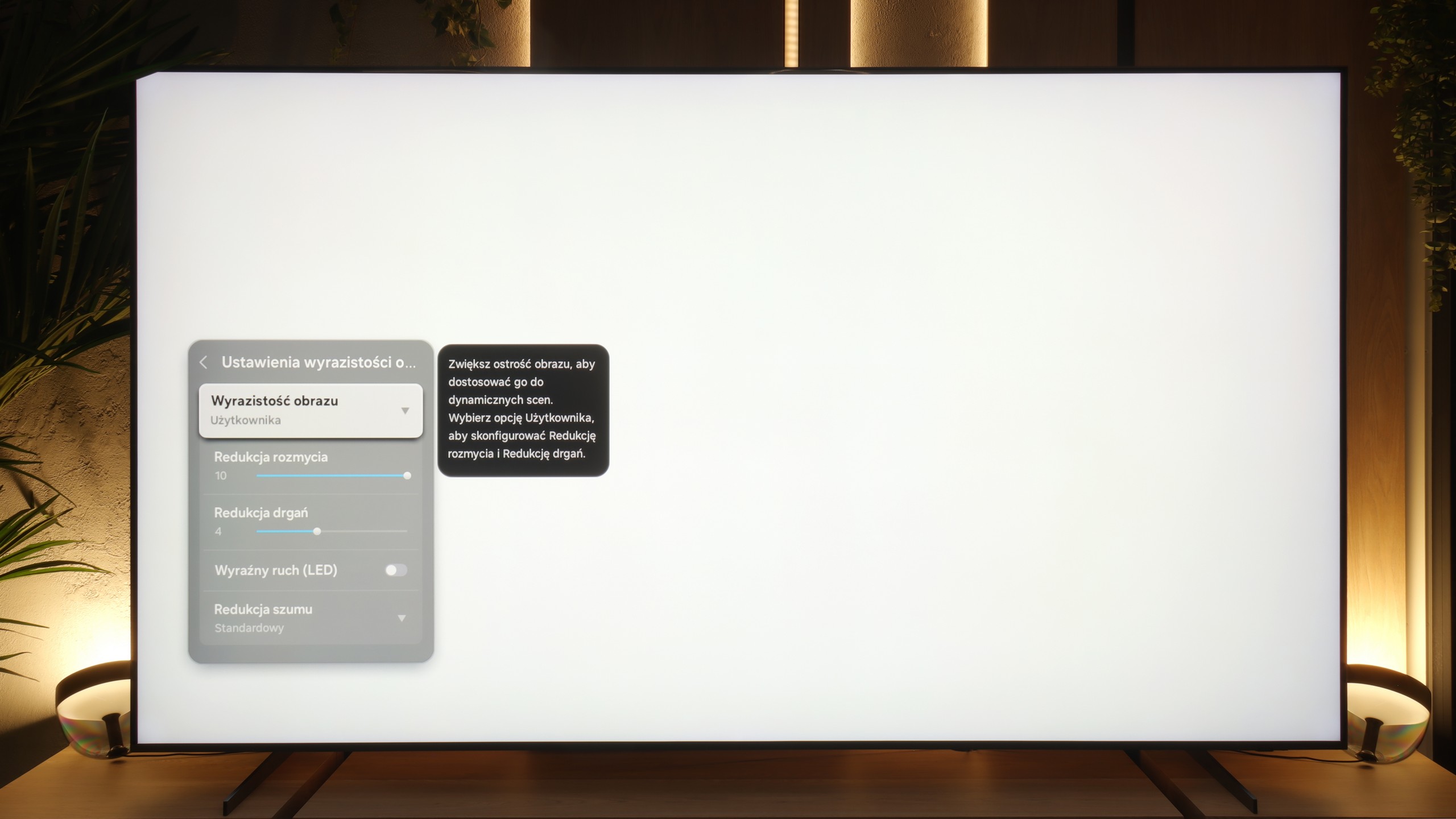
Blur (native resolution, maximum refresh rate):






Blur (BFI function enabled):



Image flickers in this mode



Blur (MotionFlow ON):



Blur (4K@144Hz):

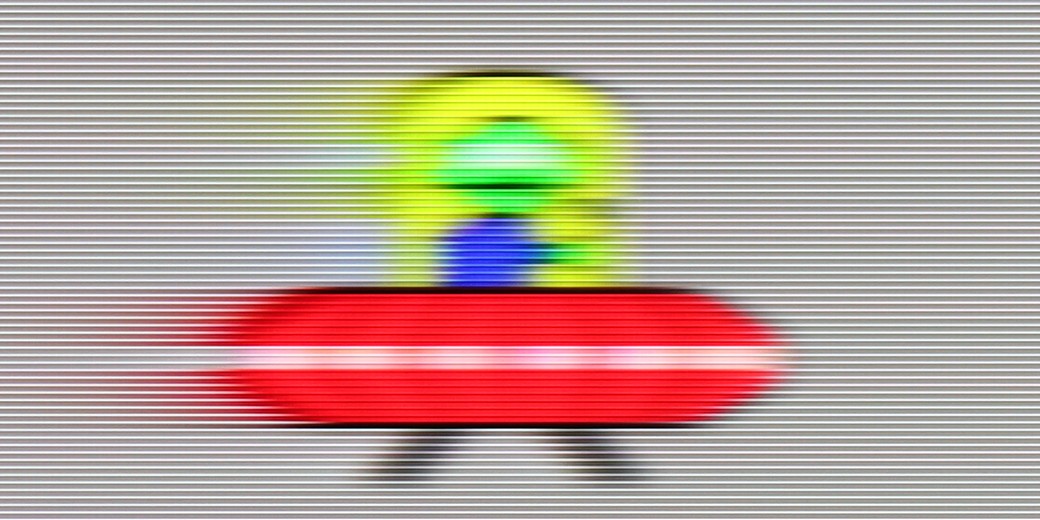
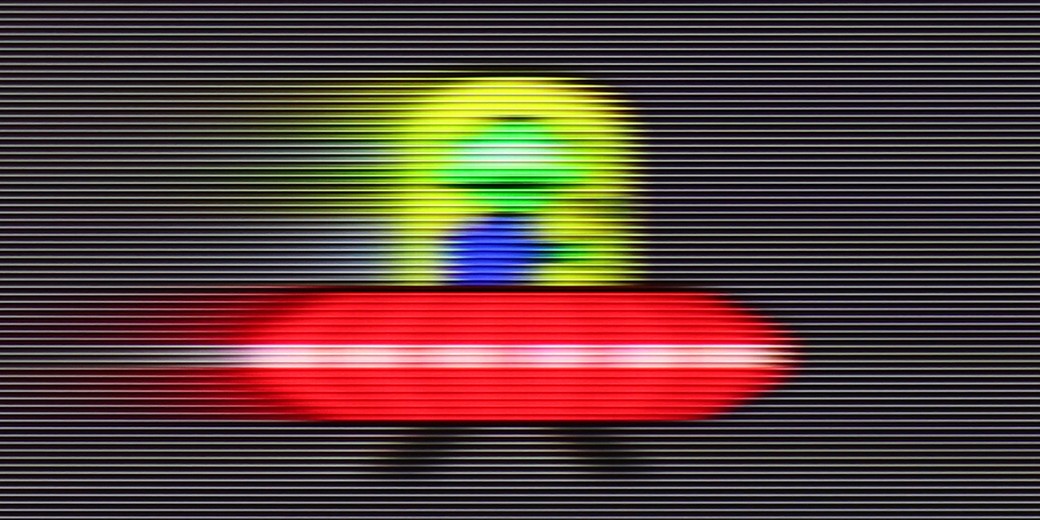
Bravia 5 received a 120 Hz panel, which in itself sounds like an invitation to watch sports, fast matches, or spectacular action films. However, the real magic begins when MotionFlow – Sony's proprietary smoothness technology – comes into play. Thanks to it, we can adjust the character of the image to our own preferences. The "smoothness" slider allows you to transition from a cinematic feel with a slight "jitter" of the film frame to a nearly theatrical fluidity, where every ball in the match glides across the screen as if on a string. The higher the value, the smoother and more fluid it is; the lower it is, the more cinematic and natural it feels. In the options, we will also find an additional setting that Sony has called "clarity". This is nothing more than the BFI function (i.e., inserting black frames), which is meant to improve motion sharpness. It sounds great in theory, but in practice, one must use it with great caution. Why? Because all higher settings cause brightness drops of up to half, and in some cases, contour doubling also appears. Therefore, if we wish to use it, we recommend the lowest possible level – "1" out of the available ten. This way, we gain a bit better motion clarity without risking a loss of half the image brightness.
The QN80F features a 144 Hz panel, and this is evident in practice – with full refresh, the image is remarkably smooth, and motion blur remains at an acceptable, barely noticeable level. However, this mode is primarily aimed at PC gamers. The most important reference point in everyday use remains the 120 Hz refresh rate, and this is where a certain discrepancy arises. During the UFO test, we noticed a splitting of the contours of rapidly moving objects – it looked as if the television had the BFI (Black Frame Insertion) feature permanently activated, which in practice led to an unpleasant effect of double edges. We do not yet know whether this is a software issue or a characteristic of this model, but in its current form, such behaviour is hard to commend.
Console compatibility and gaming features
9.8/10
8.2/10
- ALLM
- VRR
- VRR range48 - 120Hz48 - 144Hz
- Dolby Vision Game Mode
- Correct implementation of HGIG
- 1080p@120Hz
- 1440p@120Hz
- 4K@120Hz
- Game bar

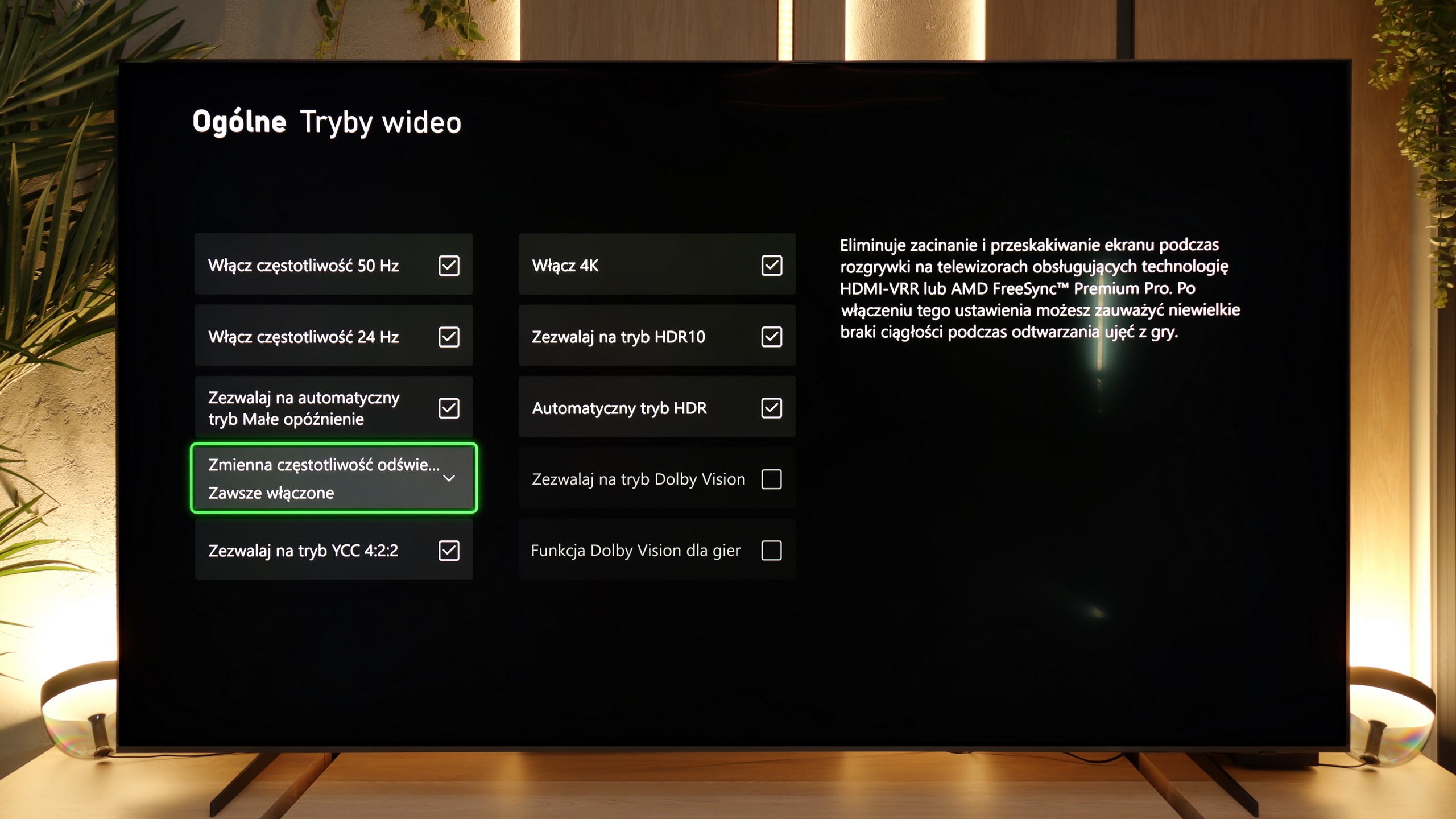

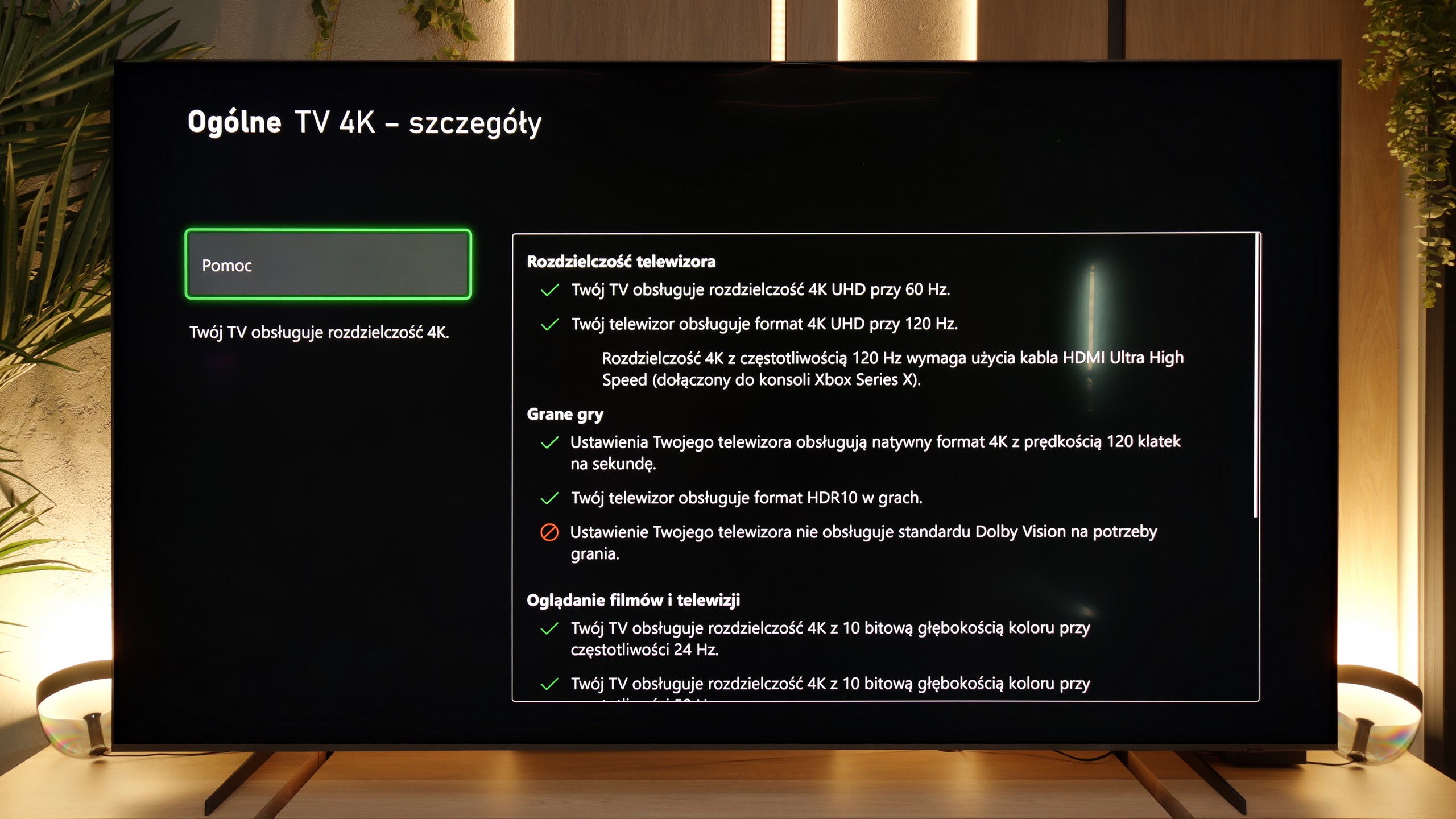

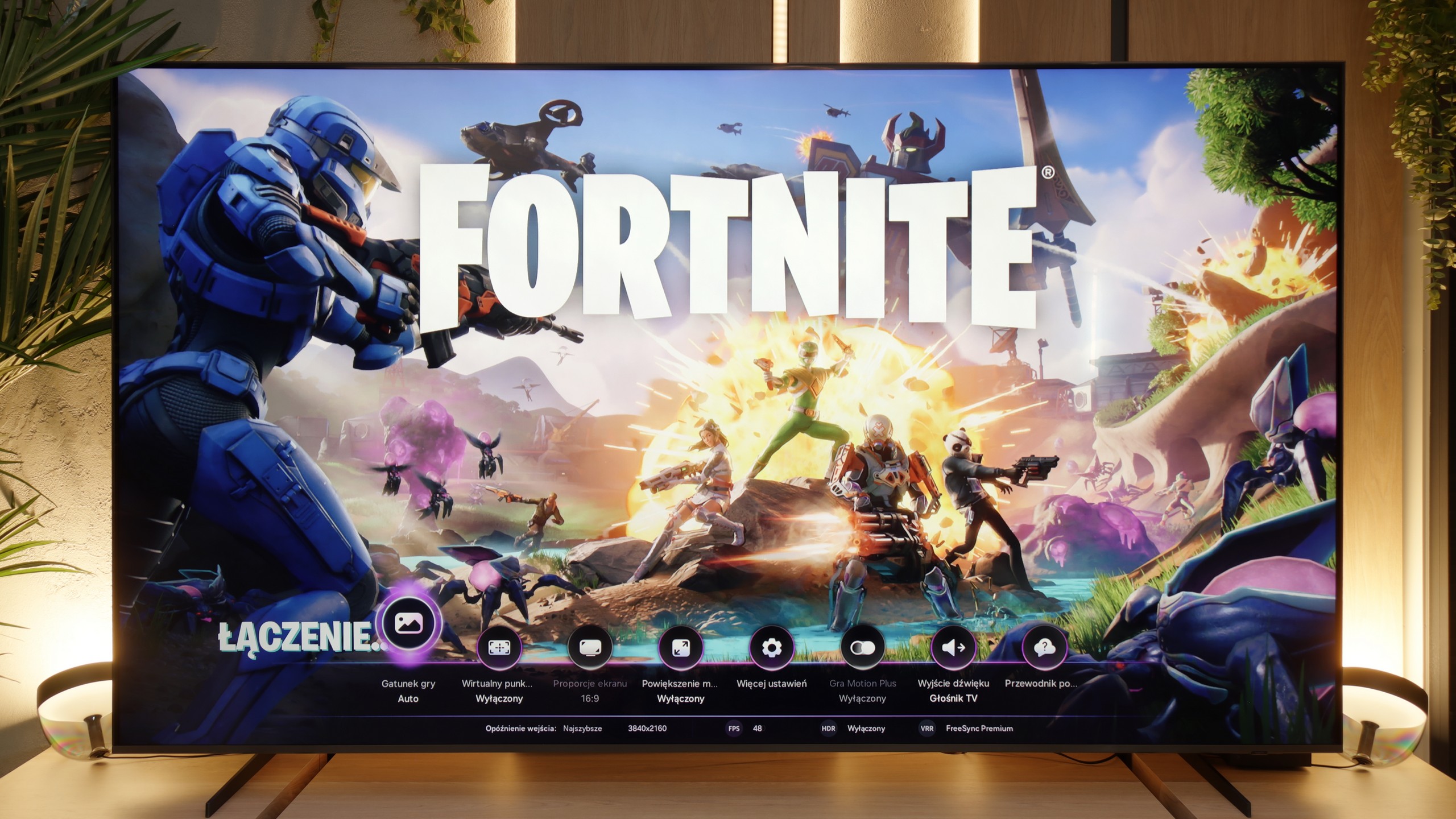

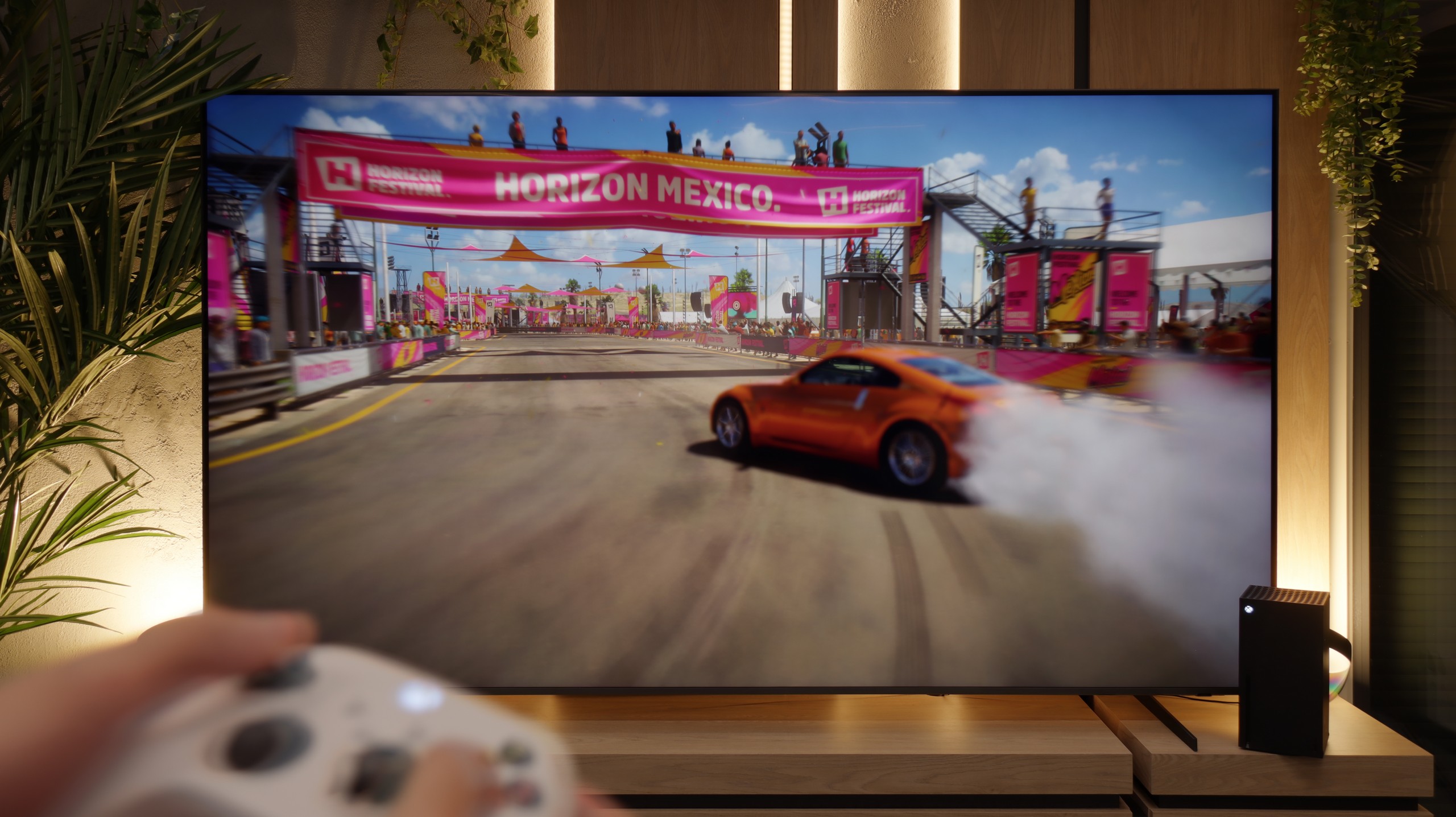
In the Bravia 5, there is a significant improvement compared to the X90L model from two years ago. The television offers literally everything its predecessor had, but this time the issues that could frustrate gamers have been fixed. The problems with setting variable refresh rate (VRR) have disappeared, and there are no longer any issues with configuring HDR content in HGiG mode. In short: we get hardware that simply works as it should, without any fuss. Therefore, the Bravia 5 has everything you could expect from a modern gaming television – and it can be reasonably advertised with the slogan “ready for PS5.” This is a statement we couldn't make about the X90L model. Well done, Sony!
It’s just a shame that this relatively high-priced model lacks a full set of four HDMI 2.1 ports. In everyday use, this won’t be a problem for most people, but if someone has a console, soundbar, and additional equipment hooked up via HDMI, at some point there will be a need to choose or juggle the cables.
The Samsung QN80F gives the impression of a television designed with gamers in mind. On the list of advantages, we have a 144 Hz panel, four full-fledged HDMI 2.1 ports, complete support for VRR and ALLM, as well as one of the best-designed game bars on the market. Additionally, there is the Game Motion Plus motion smoother, which works even in games without any real increase in input lag, making the QN80F an absolute standout in this category. In practice, this means you can enjoy smoother visuals without sacrificing responsiveness, which is a dream for many console gamers!
As is usual with Samsung, there is no Dolby Vision support in games, and this is no longer surprising. However, we were much more surprised to find that in the 2025 models… the HGIG function has disappeared. This function allowed consoles like the PlayStation 5 or Xbox Series X to perfectly adjust HDR tone mapping to the capabilities of the television. In the current firmware for the QN80F, this option simply does not exist – it seems more like an error rather than a conscious decision by the manufacturer, but as of the day of testing, it must be acknowledged that HGIG is not available. Due to this one omission, the QN80F, instead of being almost the perfect television for gamers, becomes a device that is only "almost" perfect. This is quite a shame because, aside from this, Samsung has created a model that truly raises the bar in the gaming equipment segment.
Input lag
9.9/10
9.8/10
SDR
HDR
Dolby Vision
When it comes to input lag, the Bravia 5 deserves a round of applause. Results around 7 ms at 120 Hz content are nothing short of spectacular – it’s hard to imagine a player complaining about such responsiveness. Even at 60 Hz, where the lag increases to around 15 ms, we’re still talking about values that absolutely do not spoil the fun and are not noticeable in practice. Moreover, Sony has finally tamed the Dolby Vision mode. In the X90L, it was practically unplayable – delays rose to levels of even 150 ms. Meanwhile, in the Bravia 5, the input lag remains at the same low level as with other content. This is a huge improvement and further proof that this television can truly be called “gamer-friendly.”
Input lag is something that can ruin all the fun, but fortunately, there is nothing to worry about with the QN80F. At 120 Hz, the lag drops below 10 ms, making it feel as if the television doesn’t exist at all between the controller and the image. The response is instant, everything happens exactly when we want it to. At 60 Hz, the lag is around 17 ms – that's more, but still within full comfort. In practice, console games look and run smoothly, with no annoying lags to speak of. This is the moment when you can really see that Samsung has put effort into the gaming mode – the QN80F provides a sense of control and speed that one would expect rather from a monitor than from a 100-inch behemoth in the living room.
Compatibility with PC
8/10
8.6/10

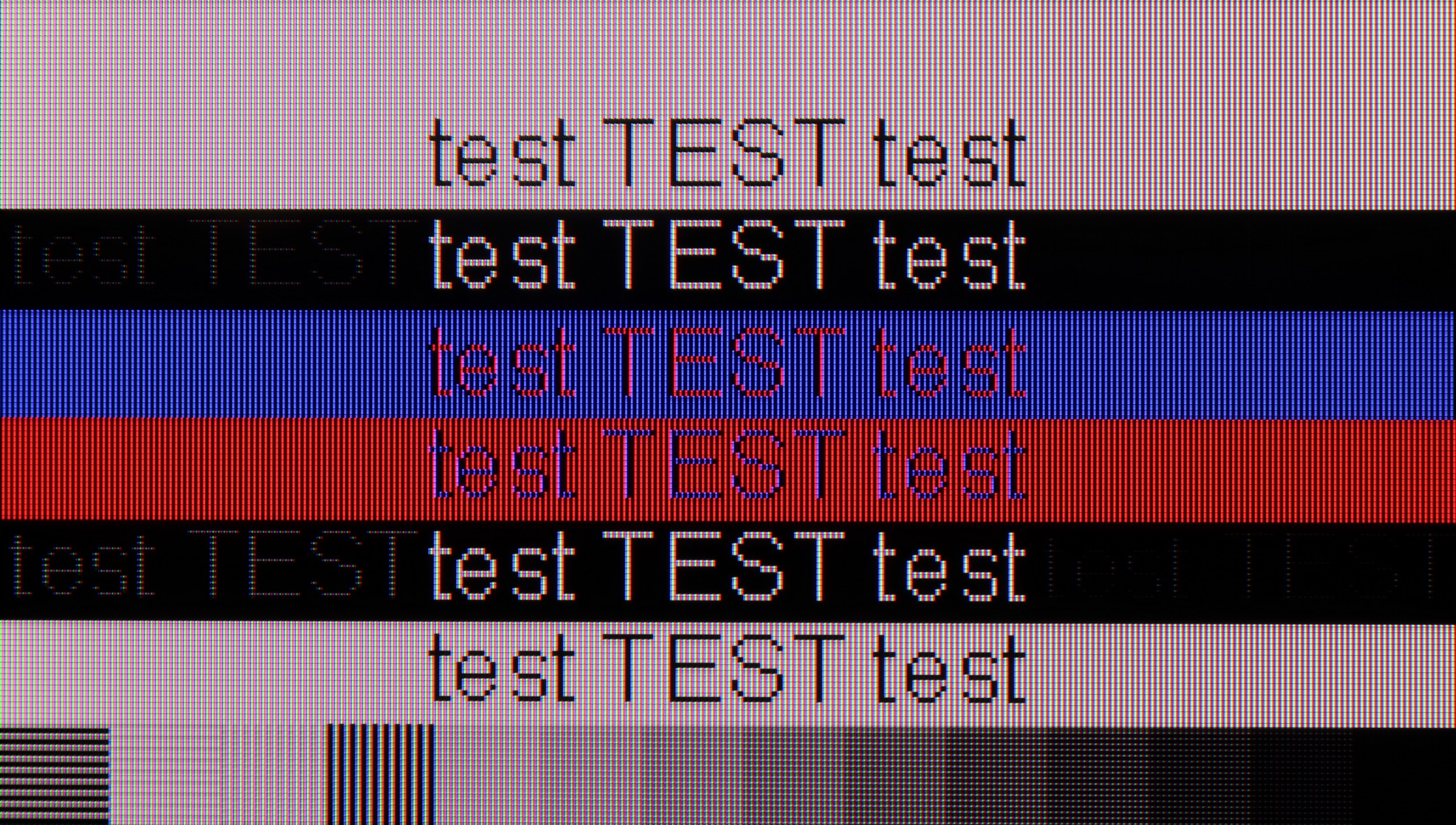
In this category, the Bravia 5 deserves a commendable rating. The ideal readability of fonts thanks to the 4:4:4 chroma support makes working with a computer on this television a pure pleasure. Whether we are opening Excel, browsing documents, or just surfing the web – the text is sharp, clear, and devoid of that characteristic "haze" that can effectively detract from the enjoyment of use on many televisions. The letters look as they should: distinct, sharp, and readable even up close.
We also have good news for PC gamers. The Bravia 5 has no issues handling 120 Hz, working with both Nvidia and AMD graphics cards, supporting G-Sync and FreeSync Premium Pro technologies. The result is that the image is not only smooth but also free of tearing or micro-stuttering that can ruin the experience even in the best-optimised games. One can confidently connect a powerful computer and enjoy gaming on a large screen – without compromises, without frustration, and with complete comfort. The only thing we could criticise is the lack of additional modes for gamers with higher refresh rates.
The collaboration with PC on the QN80F is a bit odd. When it comes to gaming, there are no reasons to worry: we have full support for 144 Hz, both G-Sync and FreeSync work, and the smoothness is truly impressive. The problem only arises when using the computer for everyday tasks – especially when we are looking at fonts instead of games. In 120 Hz mode, the image looks near perfect. The letters are readable, sharp, and the only minor detail that can be noticed is a slight dimming of thin lines. However, this is a detail that shouldn't interfere with normal usage. Greater issues arise in 144 Hz mode, which is intended to be created for PC gamers. Instead of crystal-clear fonts, a strange anomaly appears. The television adds shadows with small dots to them, making the text look simply odd. Fortunately, this is more of a curiosity than a real problem. After all, it’s hard to imagine someone placing a 100-inch colossus on their desk and staring at Excel or Word sheets from half a metre away. For gaming, the QN80F is excellent, and for normal collaboration with a PC, it's better to simply stick to 120 Hz mode.
Viewing angles
3.2/10
3.3/10
Bravia 5 uses a classic VA panel, which means one thing – the viewing angles are not its strong point. For owners of smaller sizes, this will not be an issue, as sitting directly in front, the picture looks superb. However, with larger sizes, especially at 85 inches, the situation becomes less comfortable. It is enough to sit slightly off-centre on the sofa to notice minor imperfections: the picture begins to lose saturation, the contrast weakens, and black takes on unwanted greys. It is a pity that Sony did not choose to implement additional coatings, which in the case of VA panels can bring their performance closer to that of IPS panels. Such solutions exist, and some competitors make use of them. However, they are missing here, so one must consider that Bravia 5 best shows its advantages when viewed head-on.
The viewing angles are unfortunately a weak point of the QN80F. With smaller televisions, it's still bearable, but in the case of 100 inches, the flaw becomes much more noticeable. It's enough to sit slightly to the side for the edges of the screen to appear washed out compared to its centre. And when we try to watch something at a greater angle, the picture simply loses its charm – colours become faded, contrast drops, and the depth visible straight on is no longer present. It's a shame that with such a large screen, Samsung did not attempt to apply coatings to widen the angles. This is where it would make the most sense, as it's hard to expect everyone in the living room to sit perfectly straight in front of the screen. If someone primarily cares about wide angles, they should look for mini-LEDs on an IPS matrix – these may not have such black levels, but they perform significantly better in side viewing.
Daytime performance
6.9/10
7/10

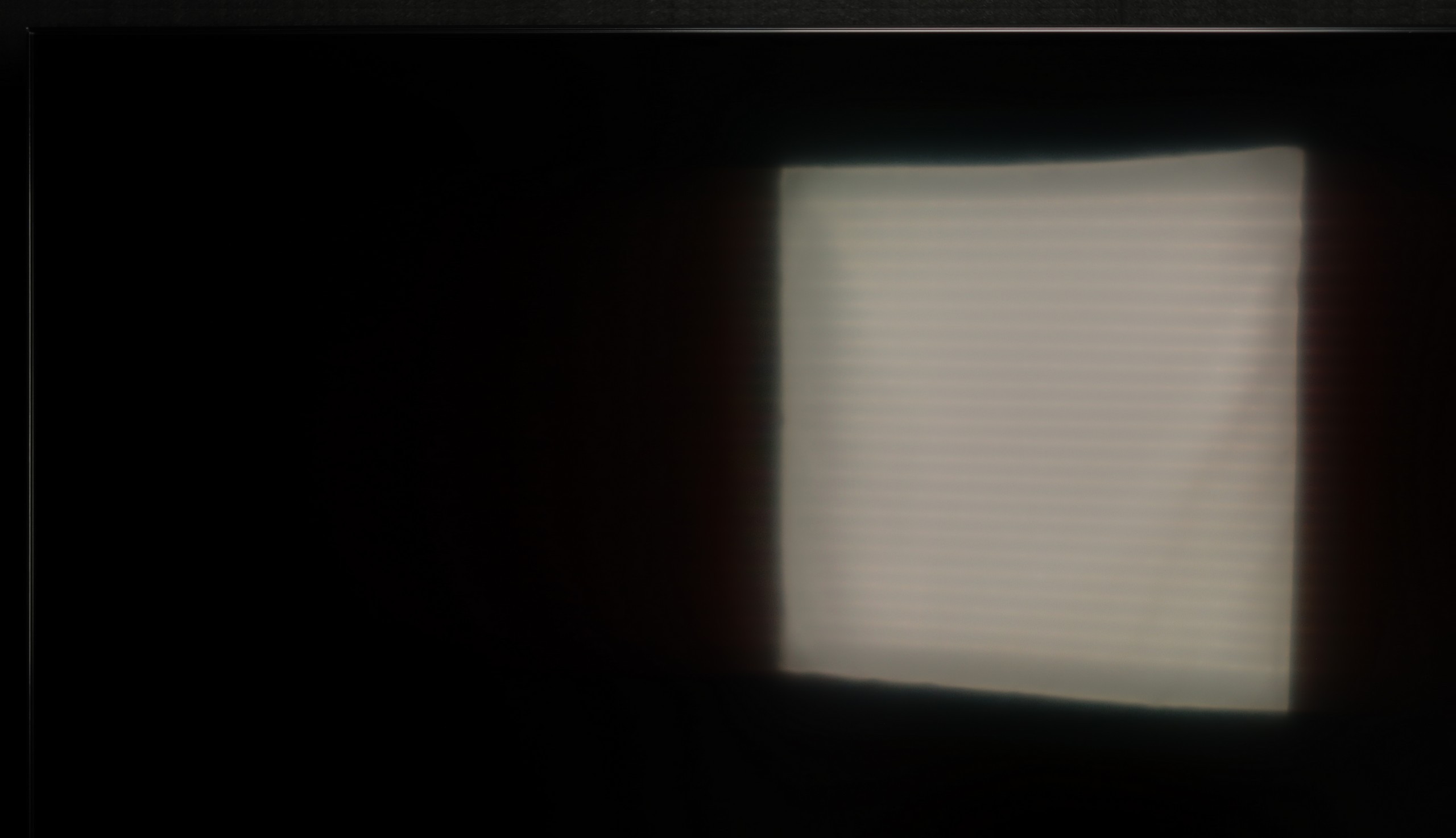

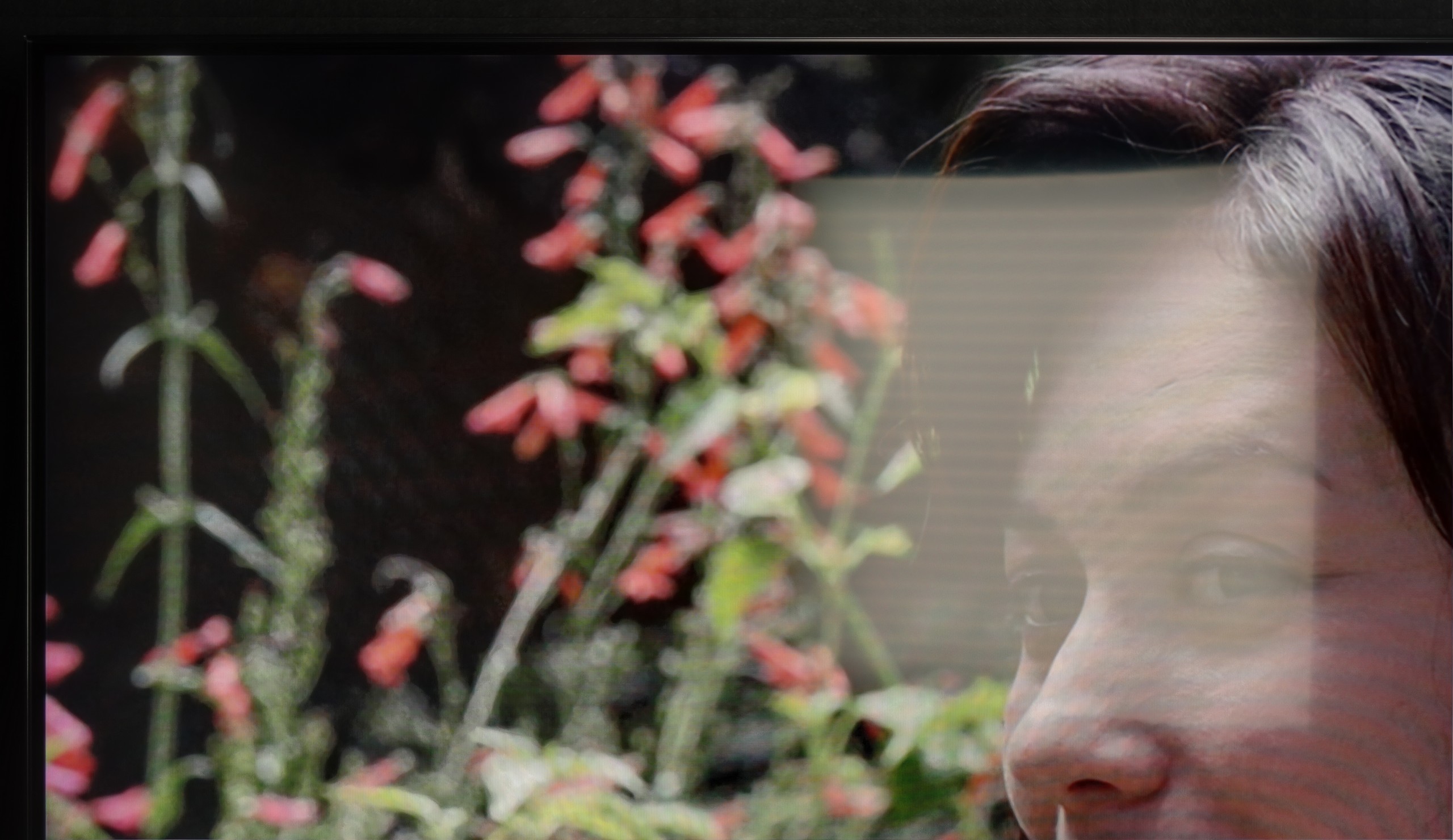
Panel brightness
Average luminance SDR
Samsung QN80F 100" : 623 cd/m2
Sony BRAVIA 5 (XR5) : 641 cd/m2
Bravia 5 is a piece of equipment that really performs well in challenging lighting conditions. The high brightness ensures that even in the middle of the day, with the curtains wide open and sunlight streaming through the windows, the picture remains clear and sharp. There is no impression that we are watching a 'washed-out' screen. The satin coating of the panel also plays a significant role, effectively suppressing light reflections. Indeed, some reflections do appear, but they are not strong enough to interfere with viewing. These are more like subtle glows that can be noticed when we consciously look for them, rather than a real everyday problem. As a result, the Bravia 5 is suitable not only for the evening in a dimly lit room but also in bright living rooms, where other televisions might falter. Therefore, it can be said that this is a 'universally light' model – it is suitable for both evening screenings and watching news or sports in full sunlight.
The performance of the QN80F during the day is an interesting topic, as the 100-inch version differs from the smaller sizes not only in scale but also in the coating used. Samsung opted for a different type of anti-reflective layer here, and it must be said that the effect is not as good as in the smaller models – reflections are somewhat more noticeable, especially with strong light coming in from the window. On the other hand, the manufacturer found a solution to this, as the 100-inch QN80F compensates with sheer brightness. The average luminance in SDR content exceeds 620 nits, which in practice provides a really strong reserve for viewing even in a heavily sunlit room. In everyday use, the difference between weaker reflection handling and higher brightness is practically neutralised – the television maintains readability and does not lose clarity even in the middle of the day. The end result is that although the coating in this version is not among the best, thanks to its high brightness, the QN80F performs better in bright conditions than one might expect.
Panel details
Subpixel Structure:
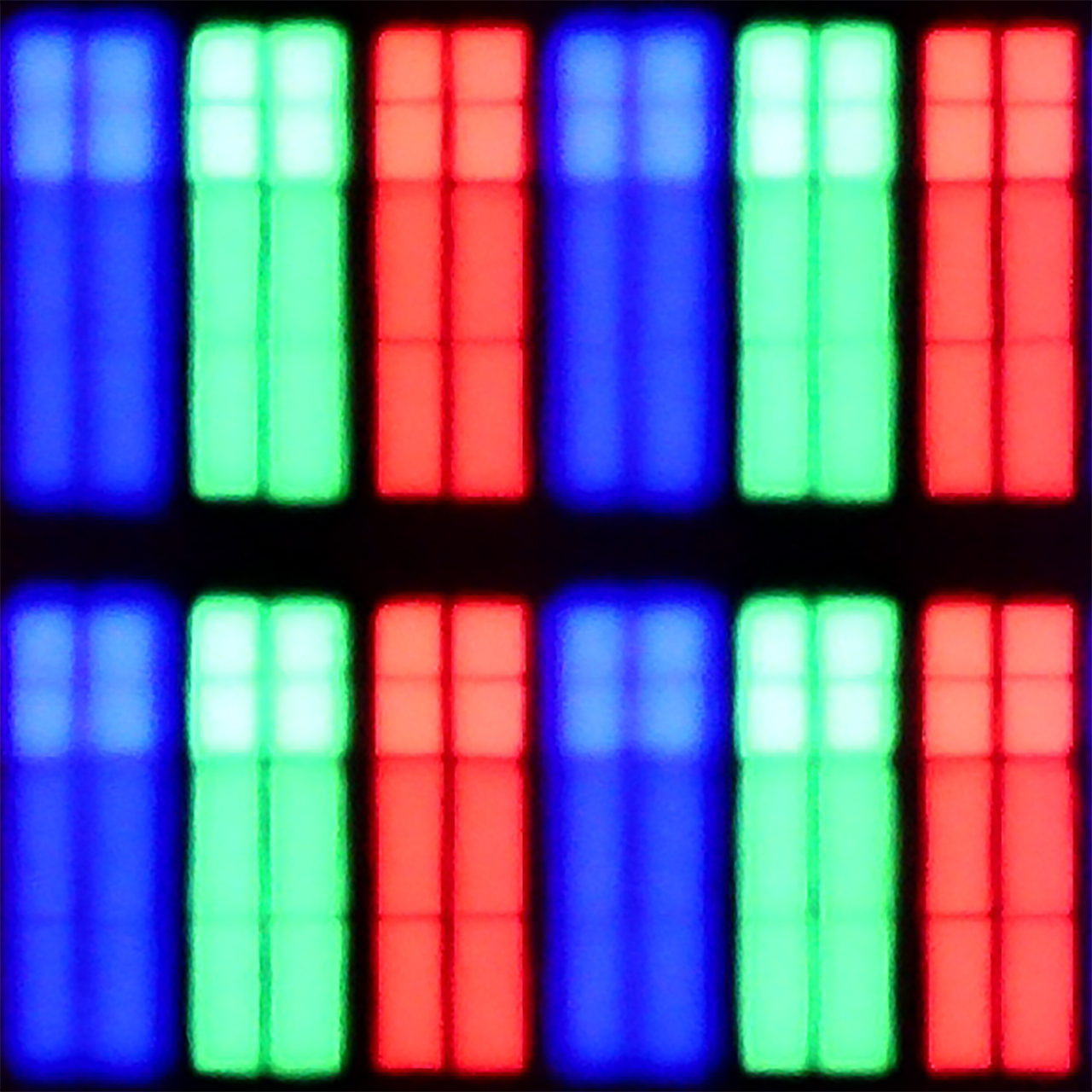
Panel uniformity and thermal imaging:

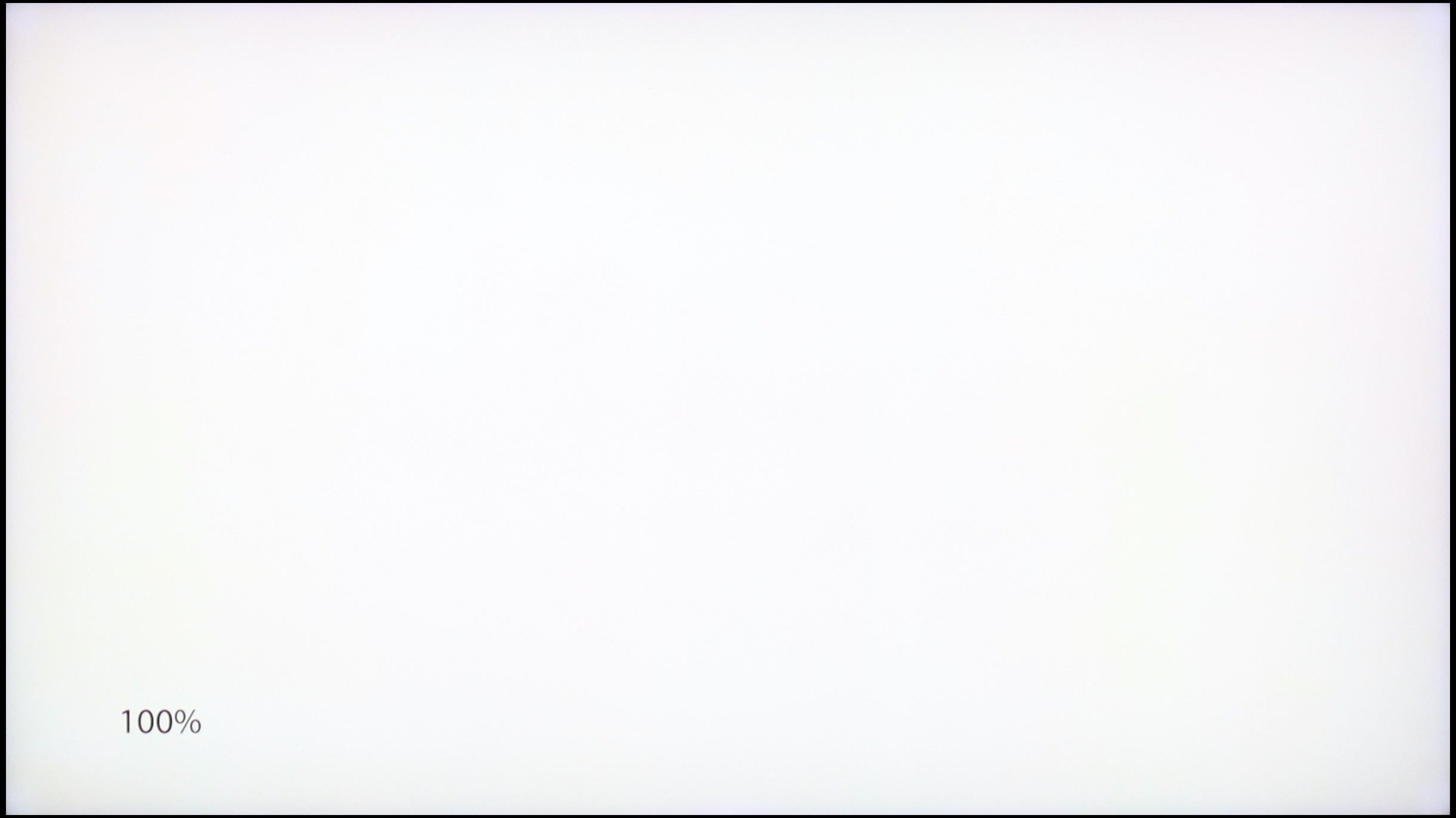
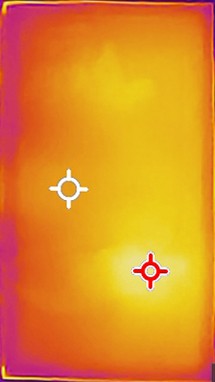
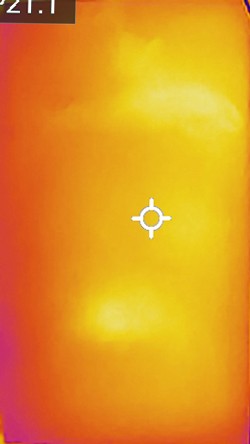
Sony BRAVIA 5 (XR5)
Samsung QN80F 100"
TV features
7.6/10
7.7/10
- HDMI inputs2 x HDMI 2.0, 2 x HDMI 2.1 48Gbps0 x HDMI 2.0, 4 x HDMI 2.1 48Gbps
- OutputsToslink (Optical audio), eARC (HDMI), ARC (HDMI)Toslink (Optical audio), eARC (HDMI), ARC (HDMI)
- Network InterfacesWi-Fi 2.4GHz, Wi-Fi 5GHz, Ethernet (LAN) 100MbpsWi-Fi 2.4GHz, Wi-Fi 5GHz, Ethernet (LAN) 100Mbps
- TV receptionDVB-T, DVB-T2, DVB-S, DVB-S2, DVB-CDVB-T, DVB-T2, DVB-S, DVB-S2, DVB-C
Classic features:
- Recording to USB (terrestrial TV)
- Recording programming
- Picture in Picture (PiP)
- RF remote control (no need to aim at the screen)
- Backlit remote control
- Teletext
- Audio only mode
- Bluetooth headphones support
- Simultaneous Bluetooth headphones & TV audio
Smart features:
- AirPlay
- Screen mirroring (Windows Miracast)
- Voice search
- Voice search in native language
- Ability to connect a keyboard and mouse




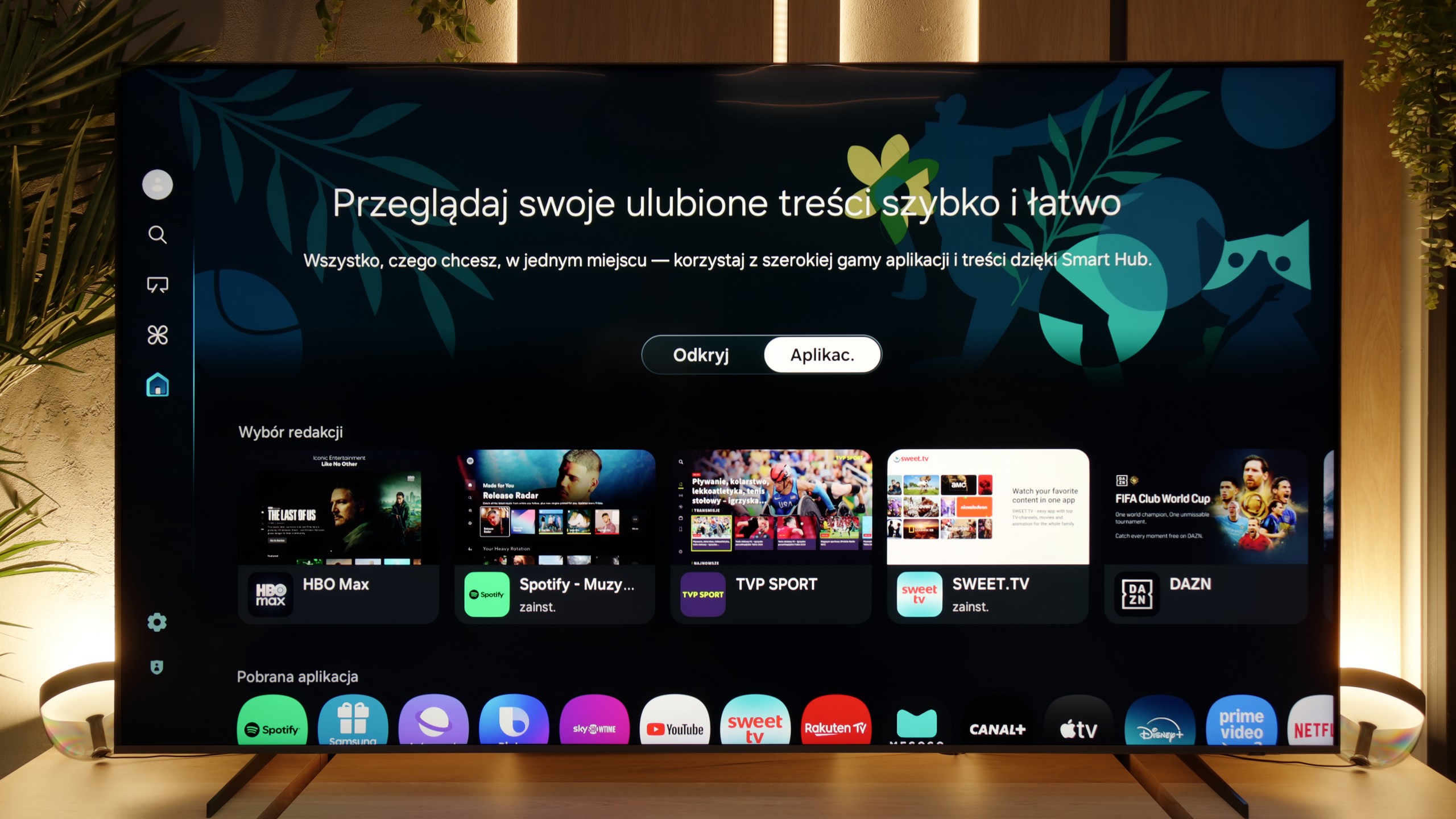
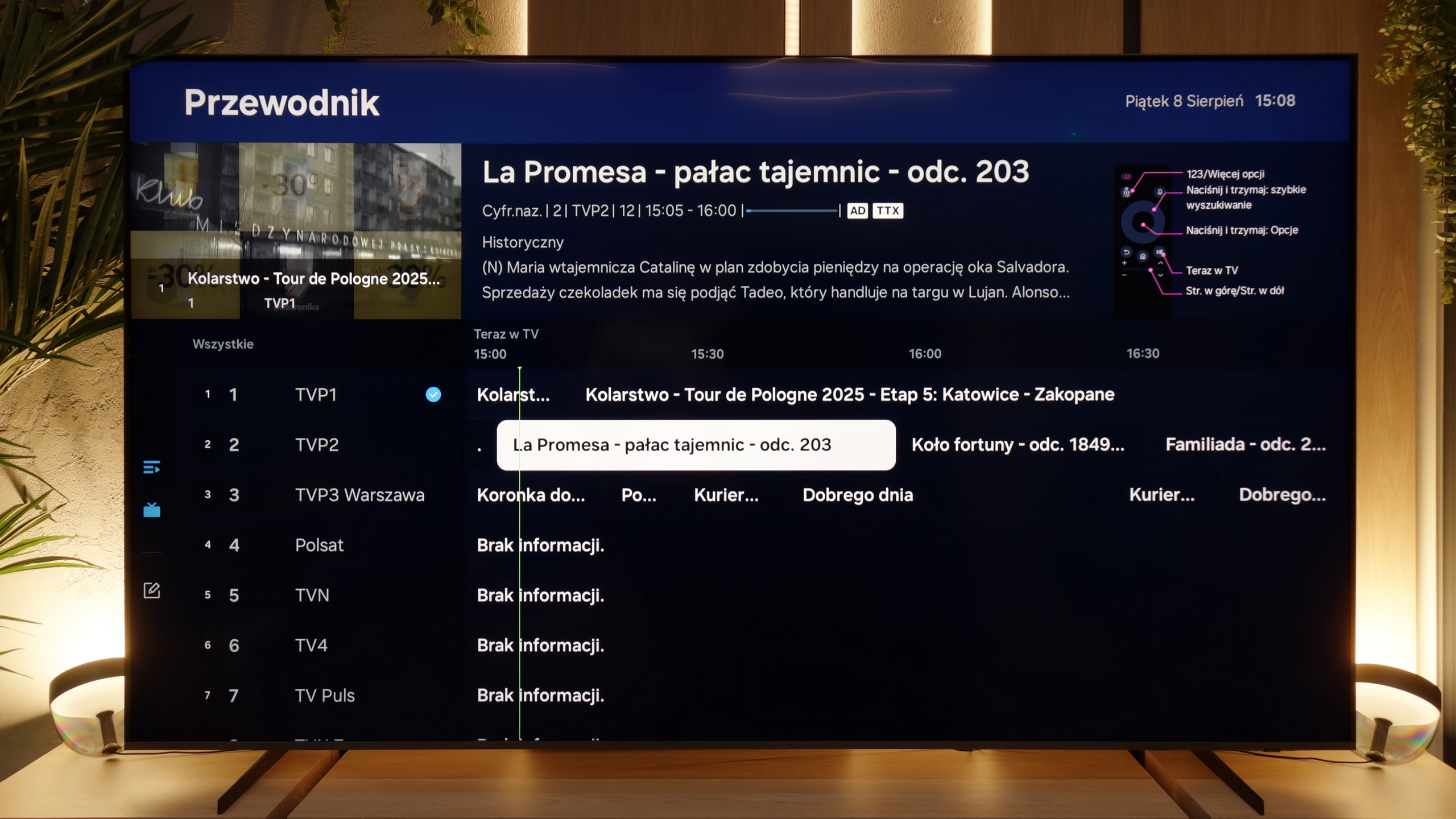
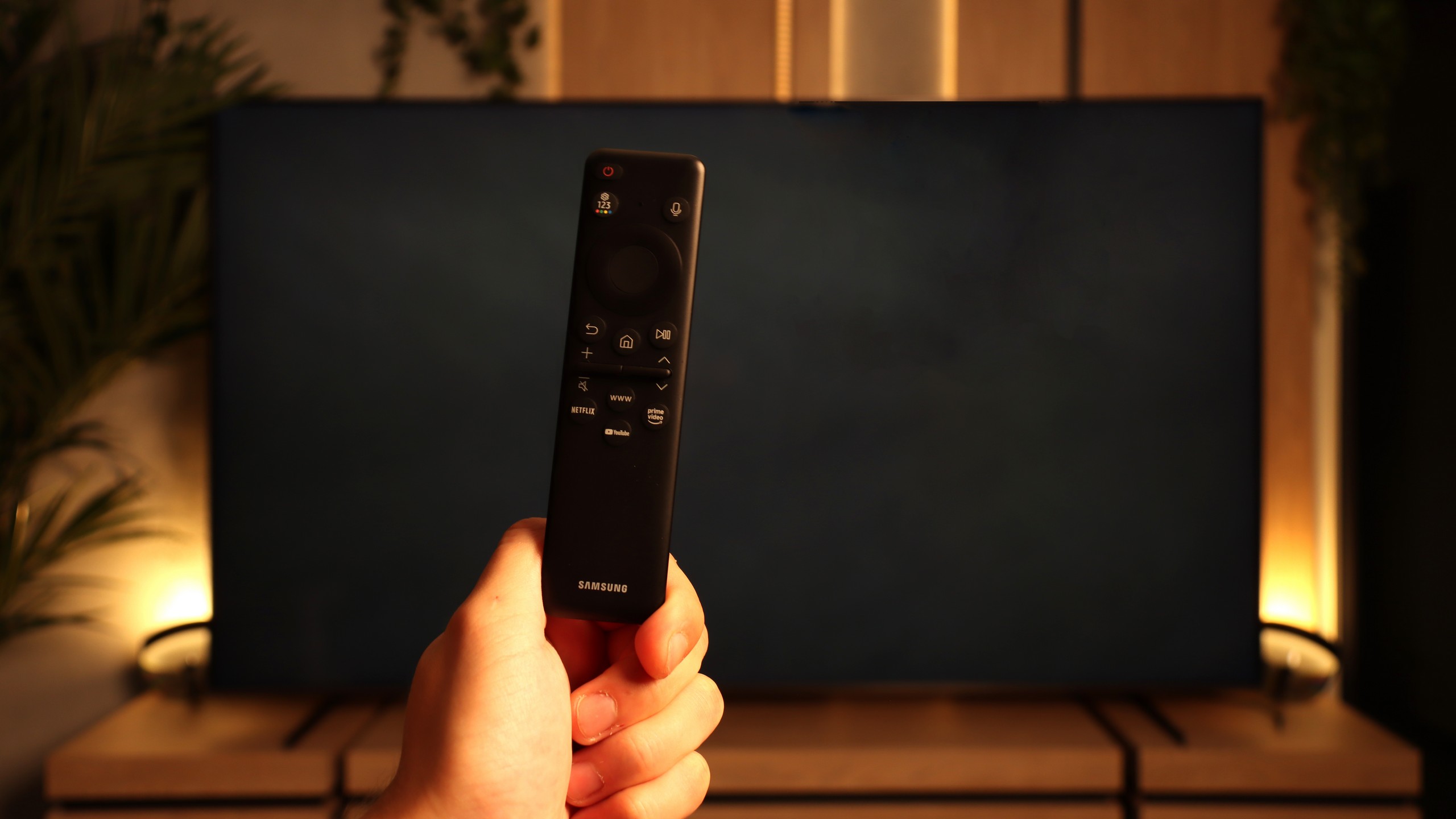
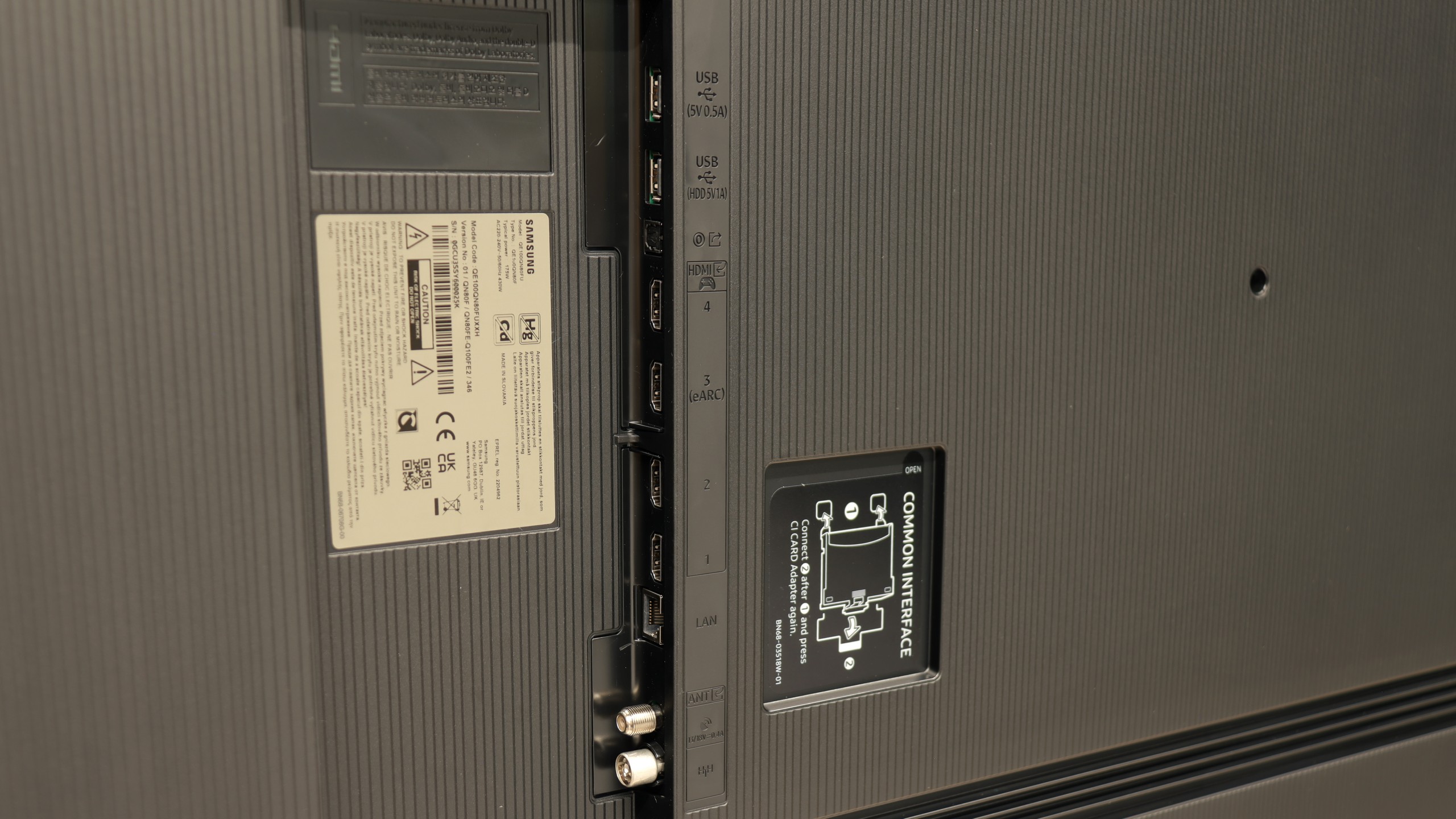
GoogleTV and SmartTV Features
Sony Bravia 5 operates on Google TV, and it must be acknowledged that this is one of the best-optimised systems from this brand. The interface runs smoothly, there are no irritating bugs or strange translations, and navigating through the menu doesn't feel like walking through a minefield. Admittedly, there are moments when it experiences a slight hiccup – as if the system has its "weaker moments" – but these are rare enough not to spoil the overall impression. We have full support for AirPlay, voice search with the help of Google AI assistant, and the ability to download practically any app that comes to mind. The only drawback in the tests turned out to be the screen mirroring function, which theoretically should work with laptops and phones, yet in practice proved to be nearly useless – on Windows and Android, stable image transmission could not be achieved.
Usability Features
From the perspective of classic features, Bravia 5 performs solidly and practically. A significant advantage is the presence of two remote controls – one is a sleek, modern smart remote, and the other, while operating via infrared, has a classic numerical keypad. This allows us to always choose which remote fits the situation better. The EPG, or electronic programme guide, is clear and allows you to programme recordings onto a USB drive – a solution that seems simple but is incredibly useful. Additionally, the television supports various device connections: from an amplifier or soundbar via HDMI eARC to headphones and other wireless accessories via Bluetooth. This is a setup that makes the television not just a screen but a well-thought-out home entertainment hub.
SmartTV Features: Tizen
When it comes to smart capabilities, the QN80F has much to boast about. Samsung relies on Tizen, and it is evident that this system has been refined over the years. All the major streaming apps are available, voice search works well, and there is AirPlay and Miracast, so there are no issues with streaming content from a phone or laptop. What is particularly interesting is that the television can integrate other devices in the home into its ecosystem – through SmartThings and support for the Matter standard, you can connect light bulbs, robotic vacuum cleaners, or even devices from other brands. In practice, the QN80F becomes not just a screen for movies, but also a convenient control centre for the entire flat. Of course, it is still a closed system, so a few less popular apps may not be found here, but let's agree – for 99% of users, it still provides everything necessary and even more.
Classic Features
The traditional features of the QN80F perform quite well, although some things are missing. It is worth mentioning the PiP, or picture-in-picture – a rarely seen feature that can still be very practical. Additionally, we have EPG, working teletext, and Bluetooth support, which makes it easy to pair headphones or a soundbar. On the downside, there is no USB recording from the built-in tuners, and the remote control lacks a traditional numeric keypad. Instead, we get Samsung's characteristic small remote, which may initially seem too minimalist. However, it must be acknowledged that this unassuming gadget conceals many possibilities and can control other devices such as satellite receivers, consoles, or Blu-ray players, so in practice, one remote is sufficient to manage the entire setup in the living room.
Playing files from USB
8.9/10
9/10
Supported photo formats:
Maximum photo resolution:

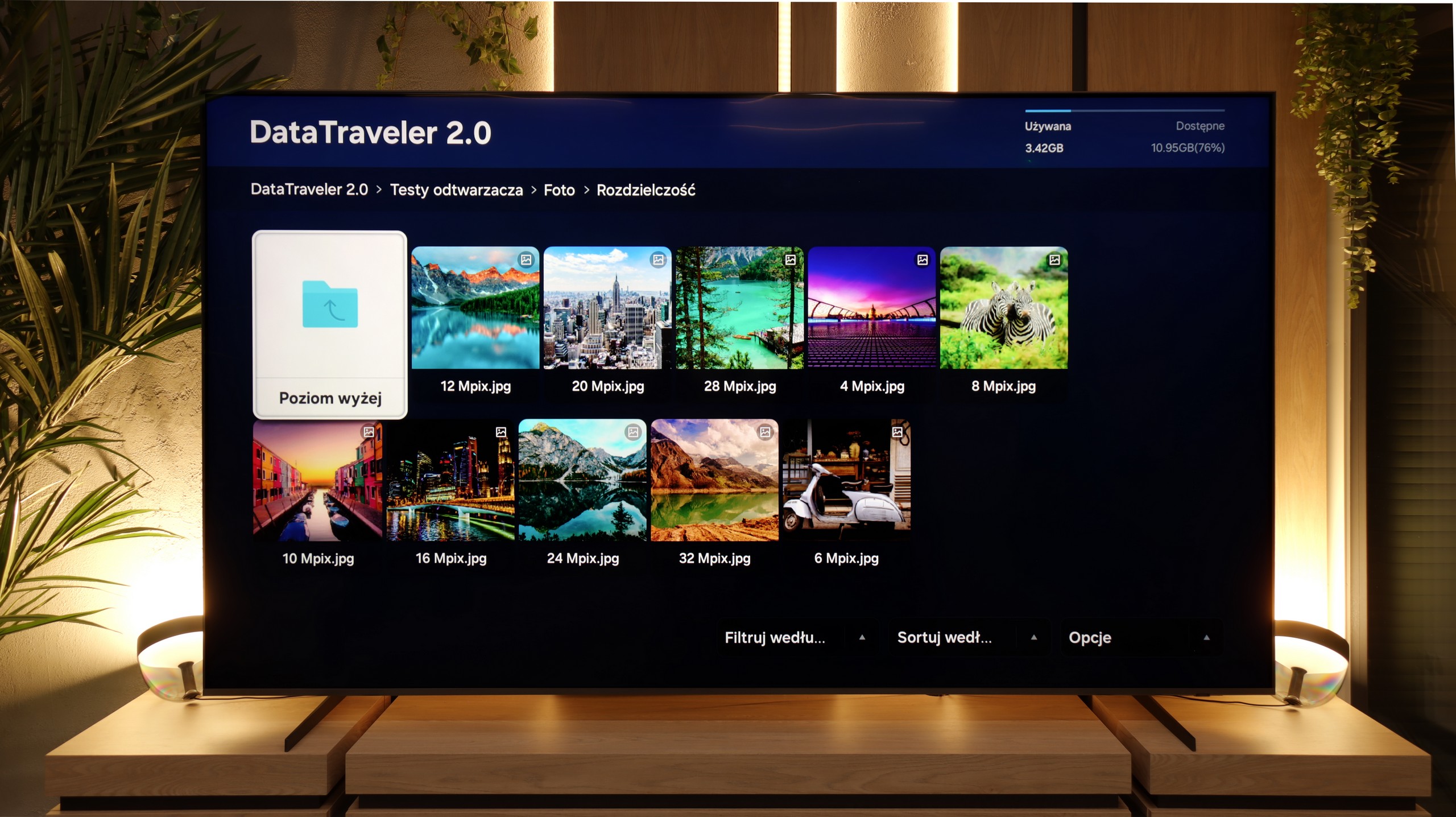
Bravia 5 handles multimedia playback from USB quite efficiently. In practice, almost everything works – films, music, photos – although of course we encountered some minor issues. Some subtitles can cause problems, as can exotic photo formats, which were not always recognised correctly. However, this is standard in the world of televisions, and it's hard to take serious offence at it. A significant advantage is the fact that thanks to Android, we are not solely reliant on the system player. It's enough to install an external application, such as VLC, and all limitations disappear. This is the strength of this system – the manufacturer does not confine us to their ecosystem but allows freedom of choice.
The built-in media player in the QN80F performs fairly well, but it's hard to talk about complete indulgence. It handles movies quite adequately – easily playing popular video formats, from simple MP4s to heavier containers. This is not on the level of powerhouses like the VLC app, but it’s sufficient for everyday viewing. Especially since the latest update fixed the issue with supporting various subtitle formats in films. The situation is a bit worse when it comes to photos. Support is largely limited to JPG and BMP, so if someone keeps their photo archive in a different format, they must rely on an additional app or be forced to convert their photos.
Apps
9.6/10
8.7/10














































Sound
7/10
6.7/10
- Maximum volume84dB87dB
- Dolby Digital Plus 7.1
- Dolby True HD 7.1
- Dolby Atmos in Dolby Digital Plus (JOC)
- Dolby Atmos in Dolby True HD
- DTS:X in DTS-HD MA
- DTS-HD Master Audio
Bravia 5 positively surprises in terms of audio. The sound is pleasant, with a slightly noticeable bass thanks to the proprietary Bass Reflex speakers. Overall, it plays loudly, clearly, and definitely above average for a television – 40 W of power in a 2.2 configuration is an impressive result in this class. The placement of the speakers on the sides of the casing also plays a significant role, making the sound spread throughout the room and providing a sense of space. However, one should not be overly optimistic. It is still not on the level of even the simplest soundbar. Bravia 5 performs excellently in everyday use, but for those who enjoy strong sound and a cinematic effect, additional audio equipment will be essential – as is the case with nine out of ten televisions available today on the market.
The QN80F performs well on its own – with a light bass, a bit of space thanks to Dolby Atmos, and clear enough that daily viewing of films or series is not tiring. But with a 100-inch screen, it's hard not to add a soundbar. Only then will the scale of the image and sound start to match, because although the television manages, it's difficult to expect the built-in speakers to fill such a large living room with sound.
Sound Quality Test
No sound test video
Acoustic Measurements
84dBC (Max)
75dBC
87dBC (Max)
75dBC
